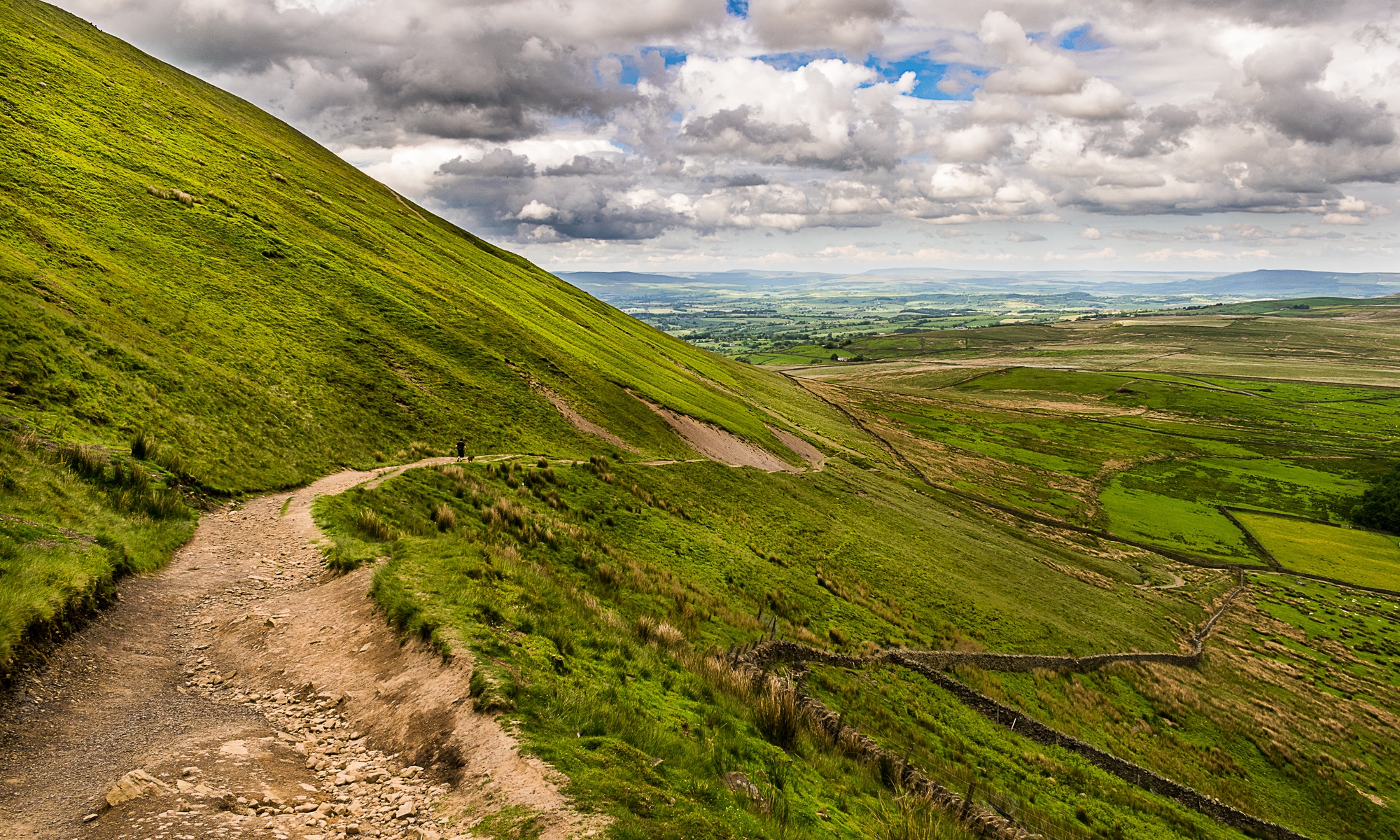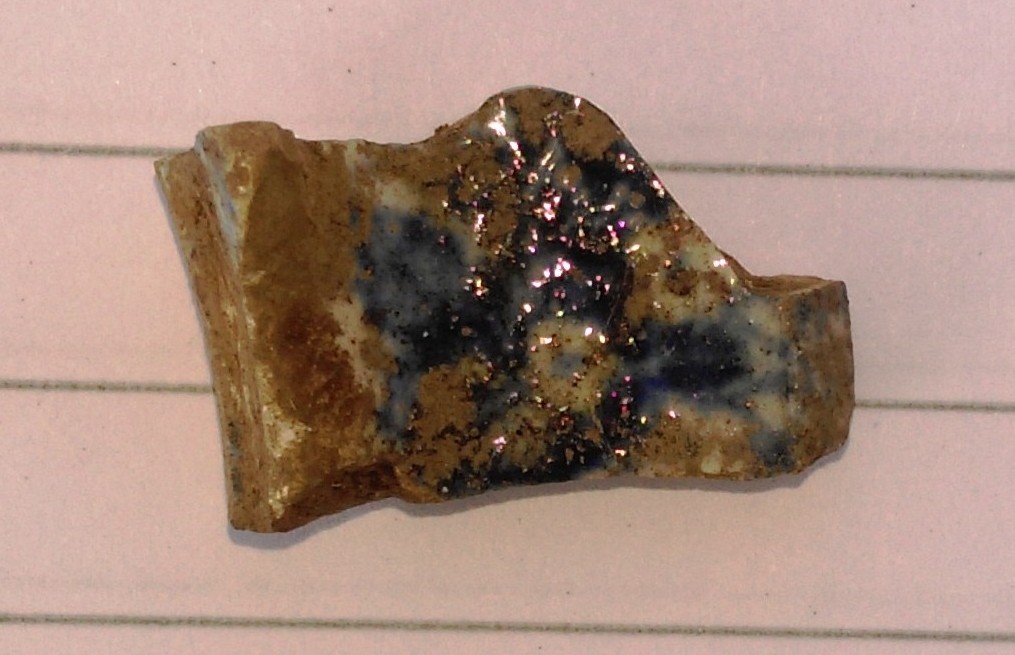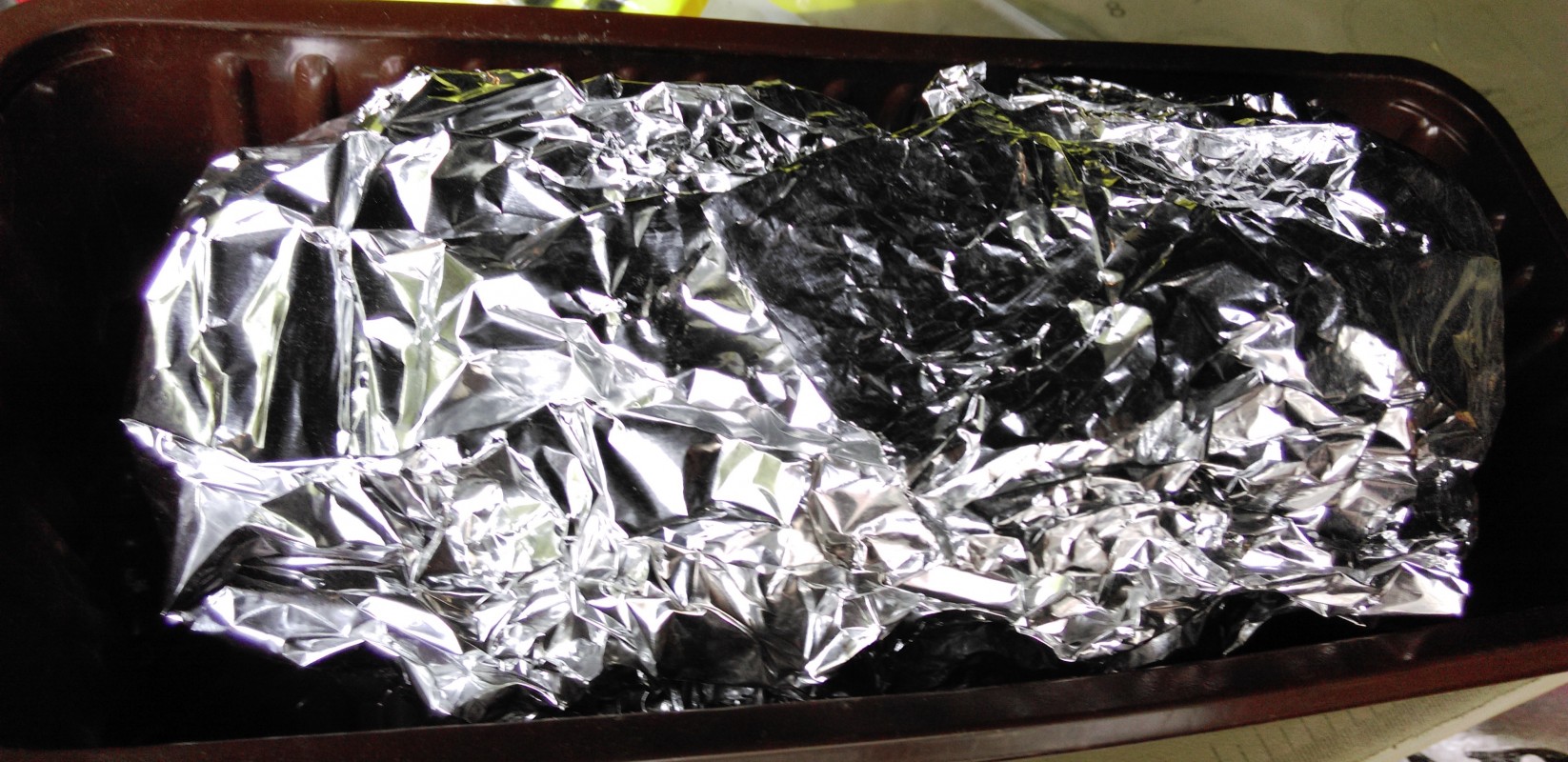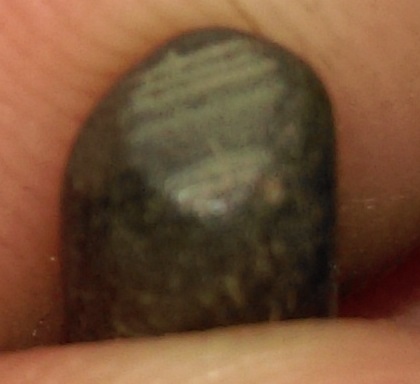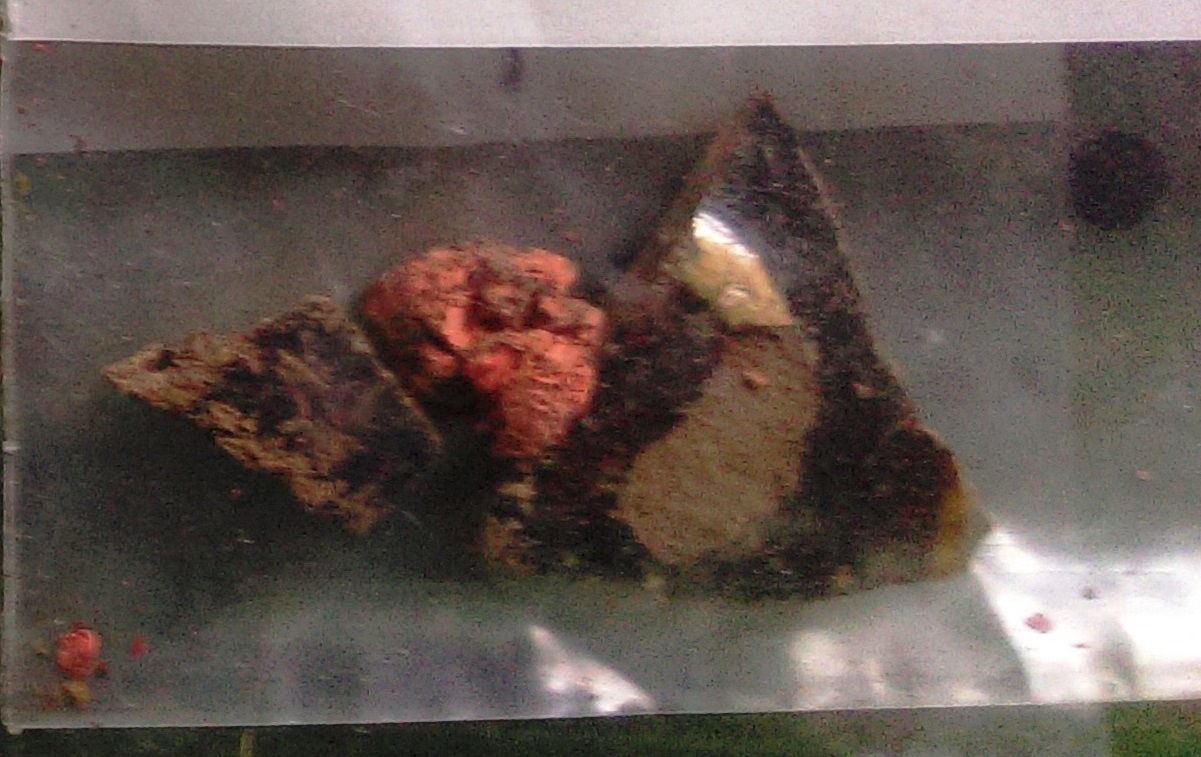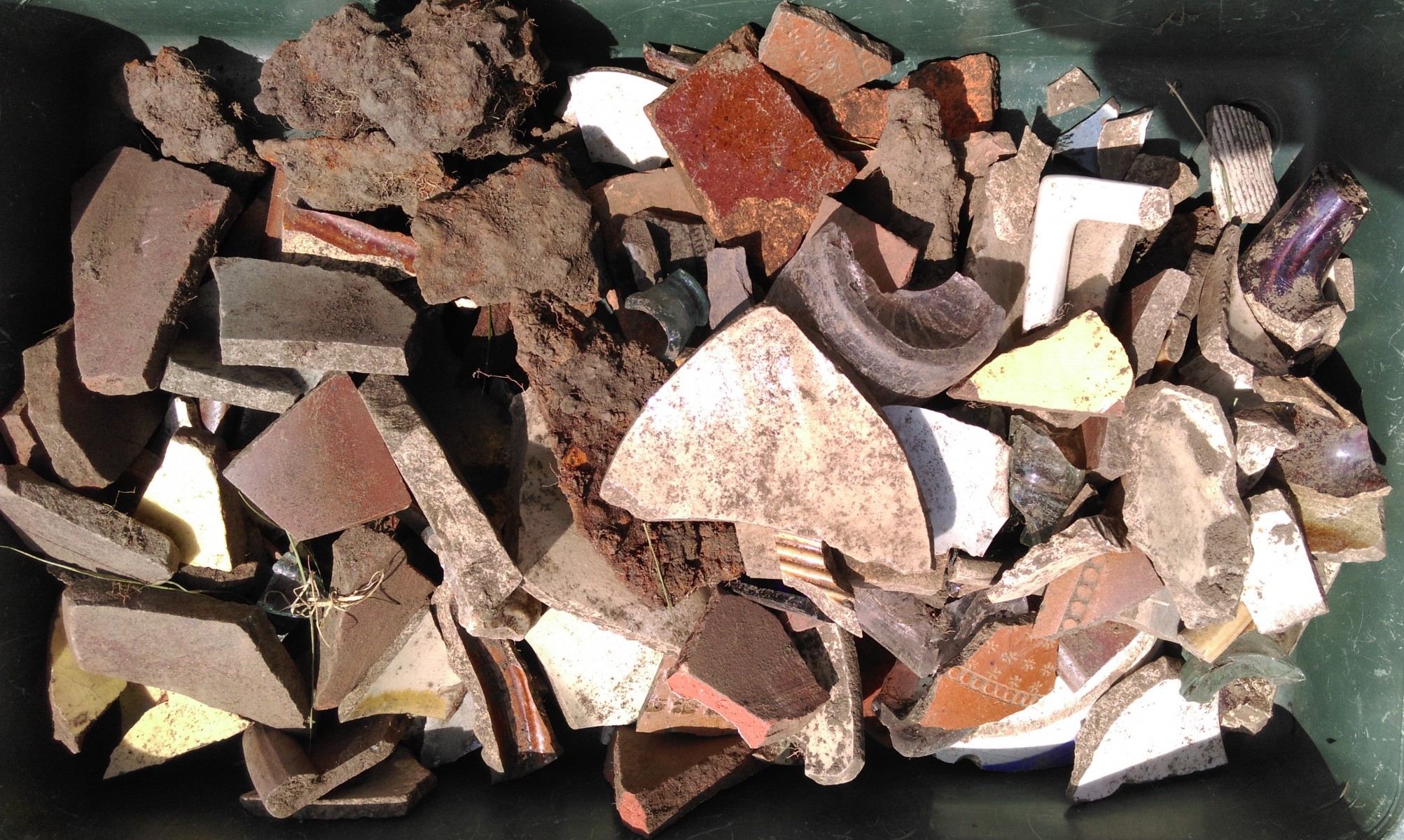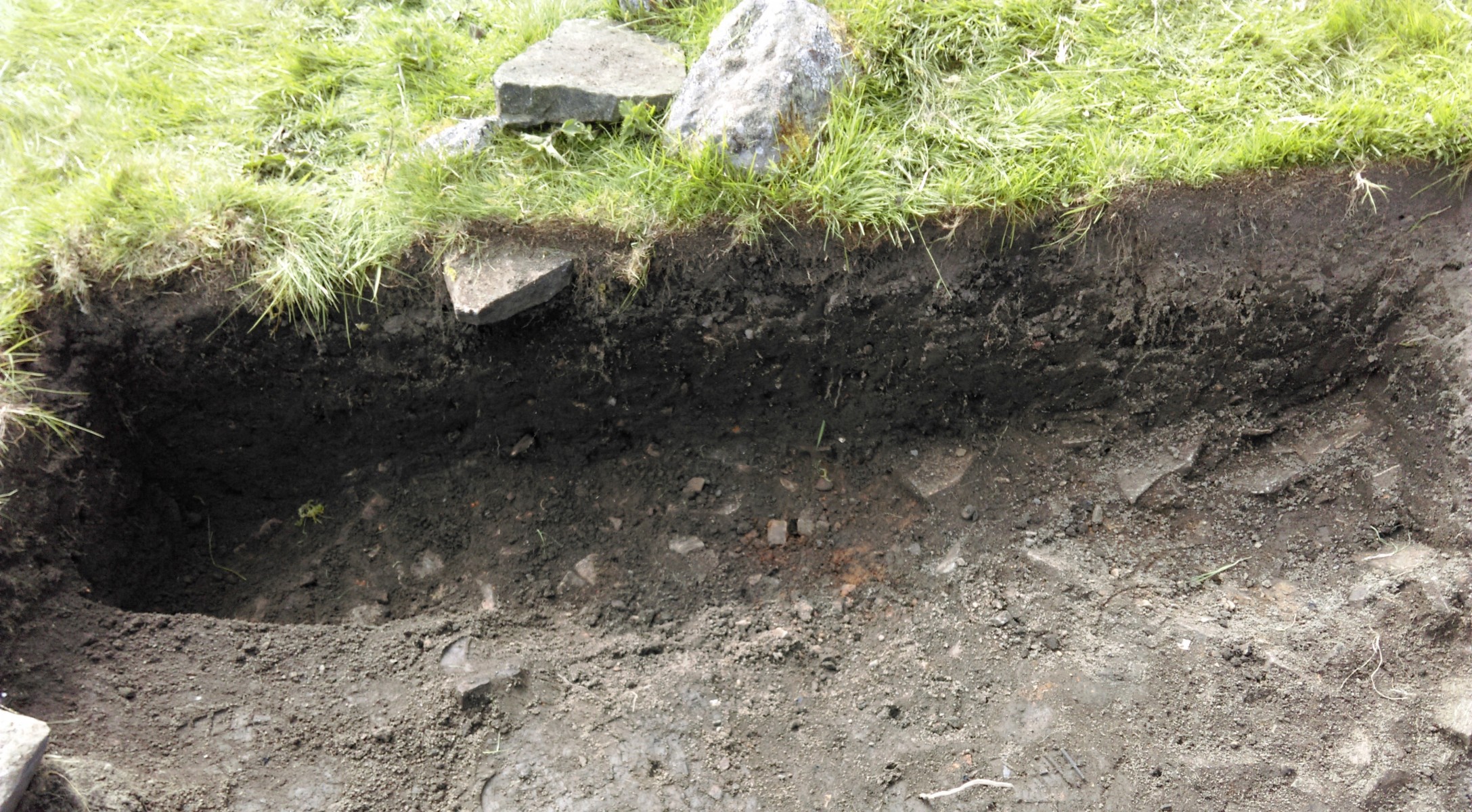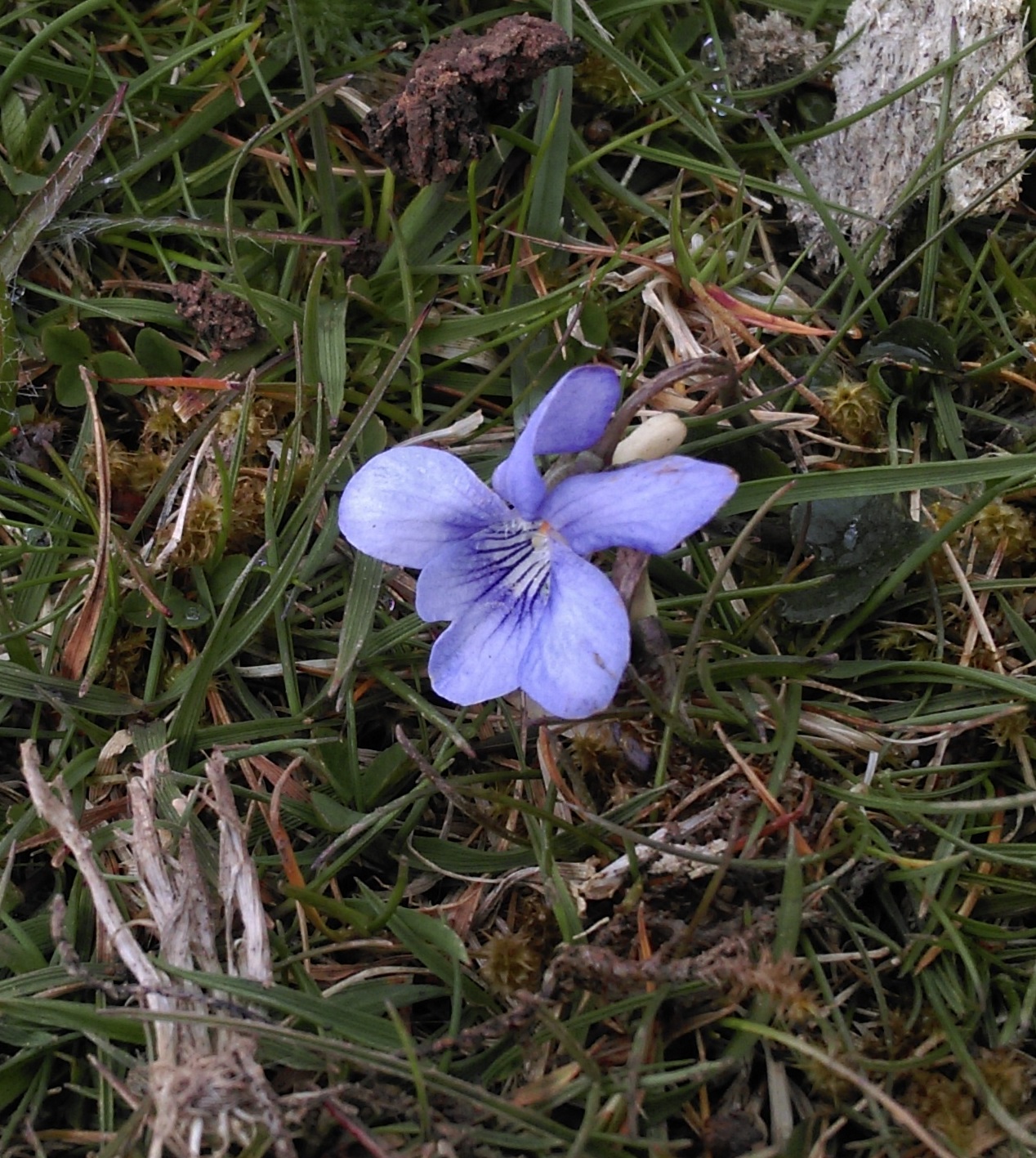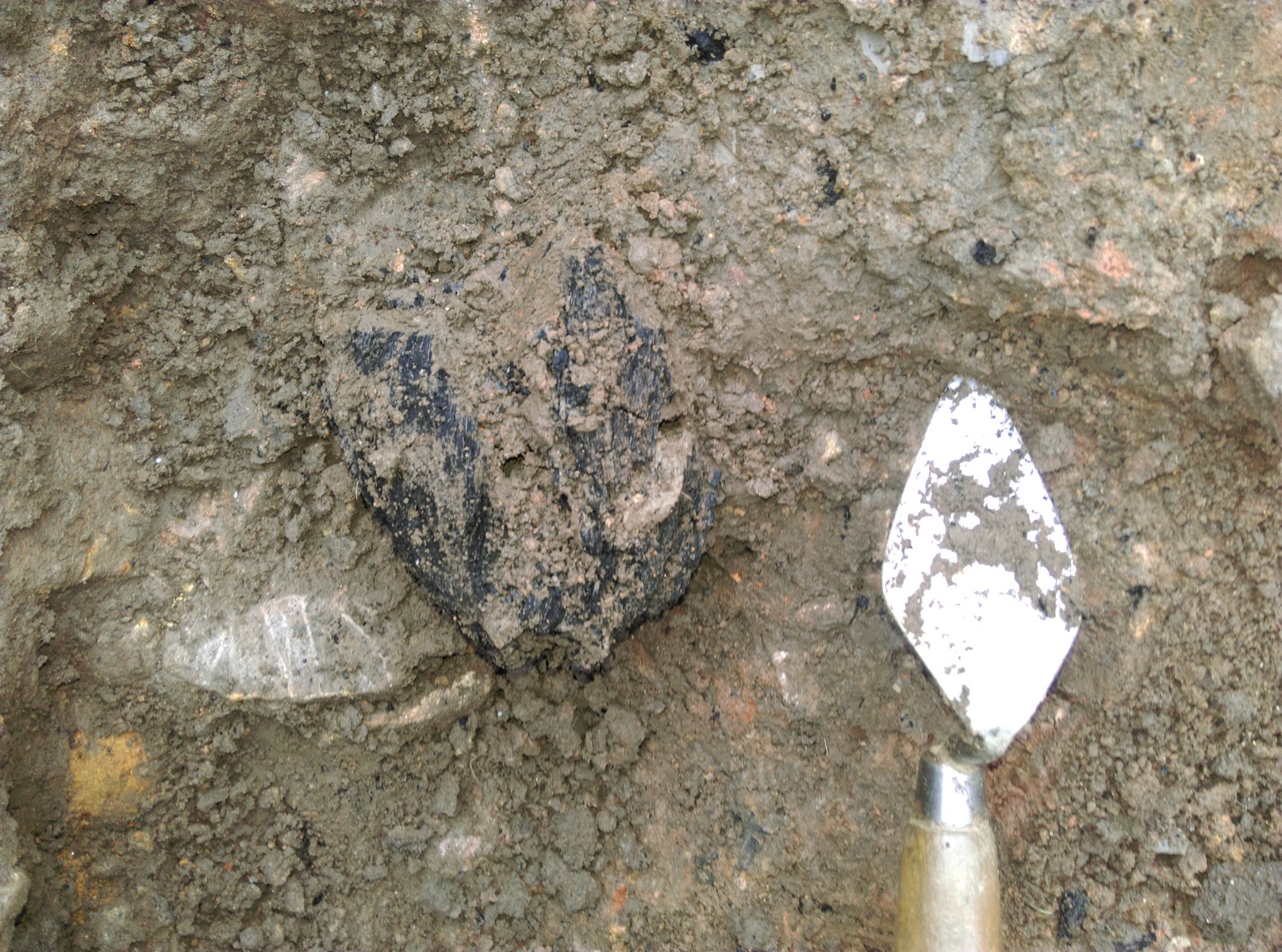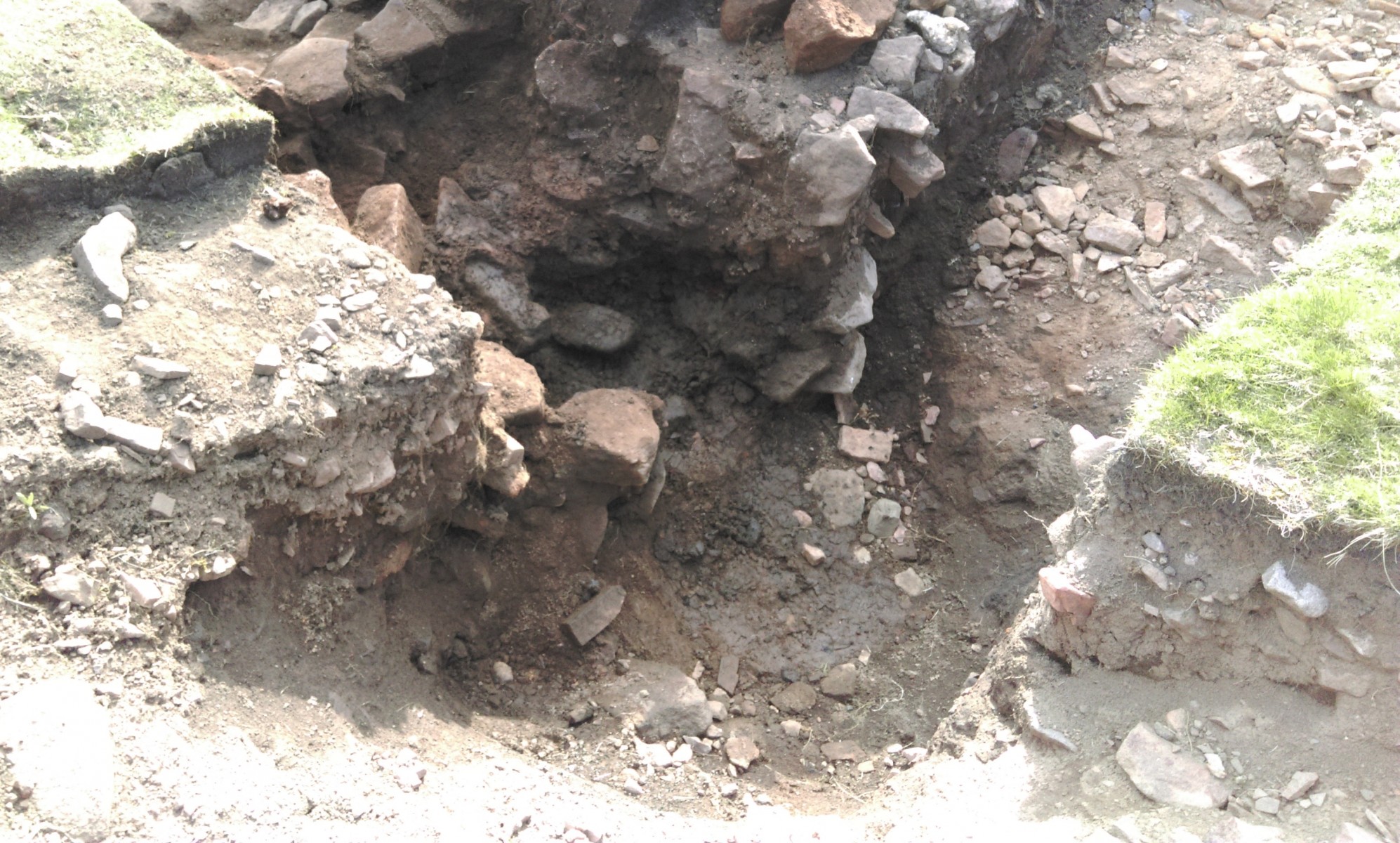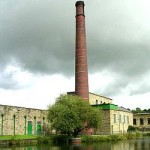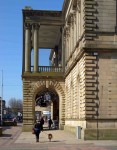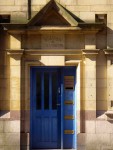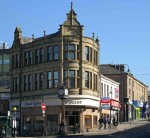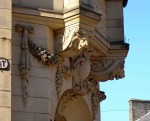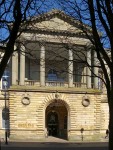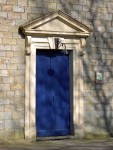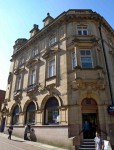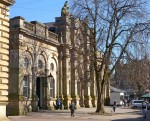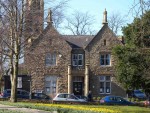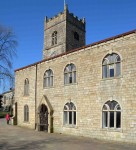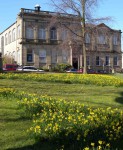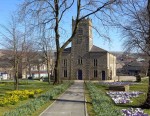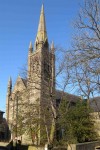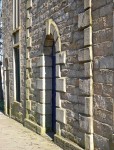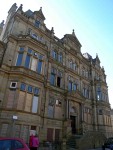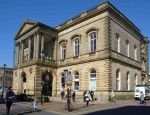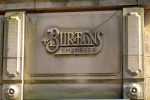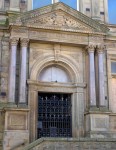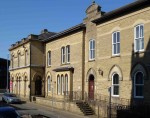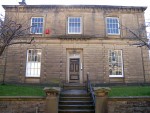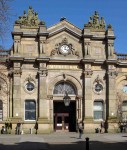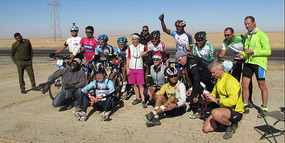The weather played another blinder today. On the way to the site today I mused that for the last three days the Find Of The Day had been won by people on the first day of their first dig. Yet by early afternoon it looked to be going to a particularly nice sherd of Staffordshire Combed & Trailed Ware (c1675 to c1770 AD), from Trench 2, found by someone on their second day. More of that later.
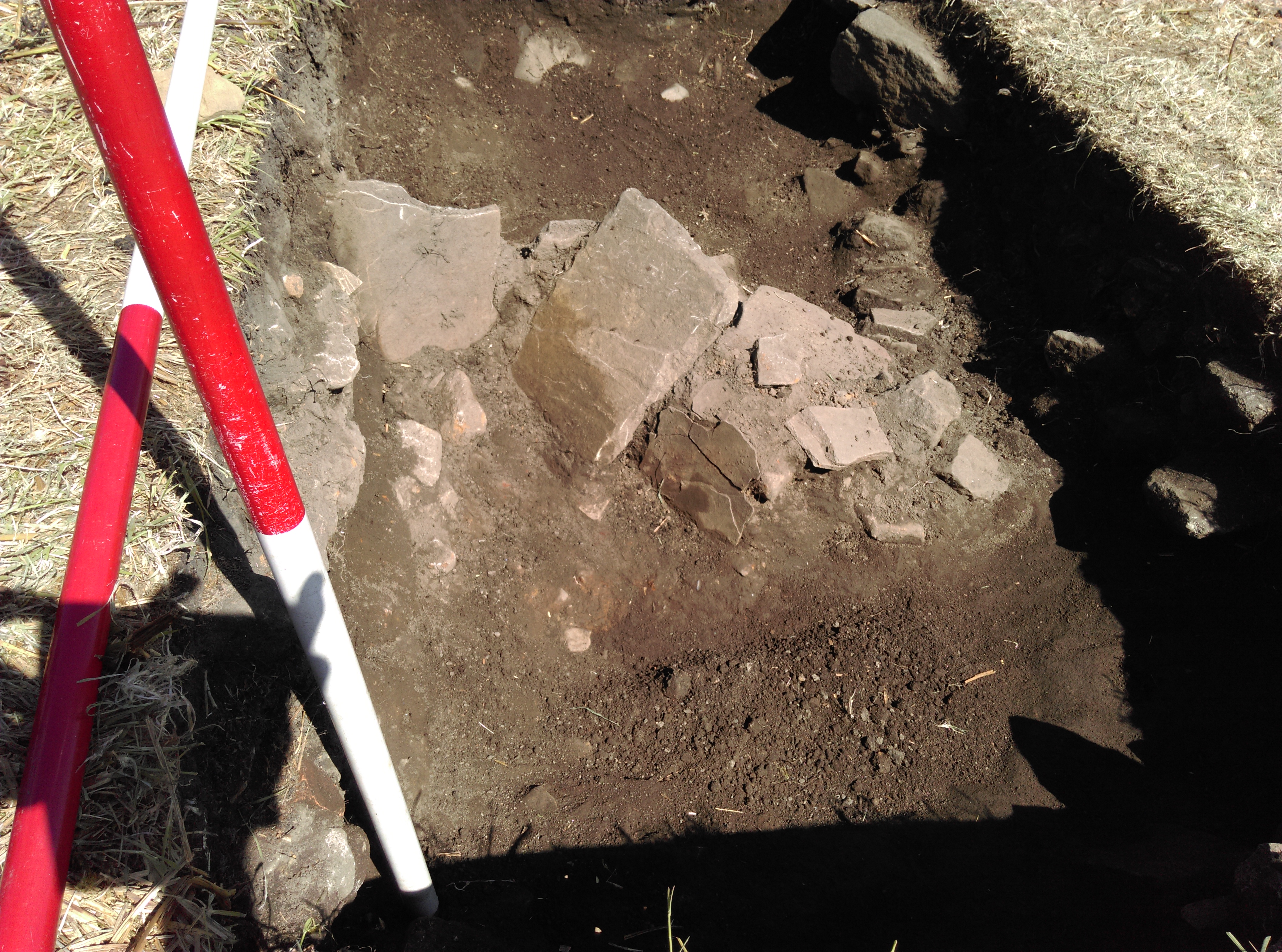
In Trench 2 today they bottomed out Context 2. This has confirmed that the slab question mark found previously is actually a structure And most of it is resting on the top of Context 3. The bigger slab toward the centre was originally a roof set with the downward side now pointing upward. Views of the structure in the images above & below
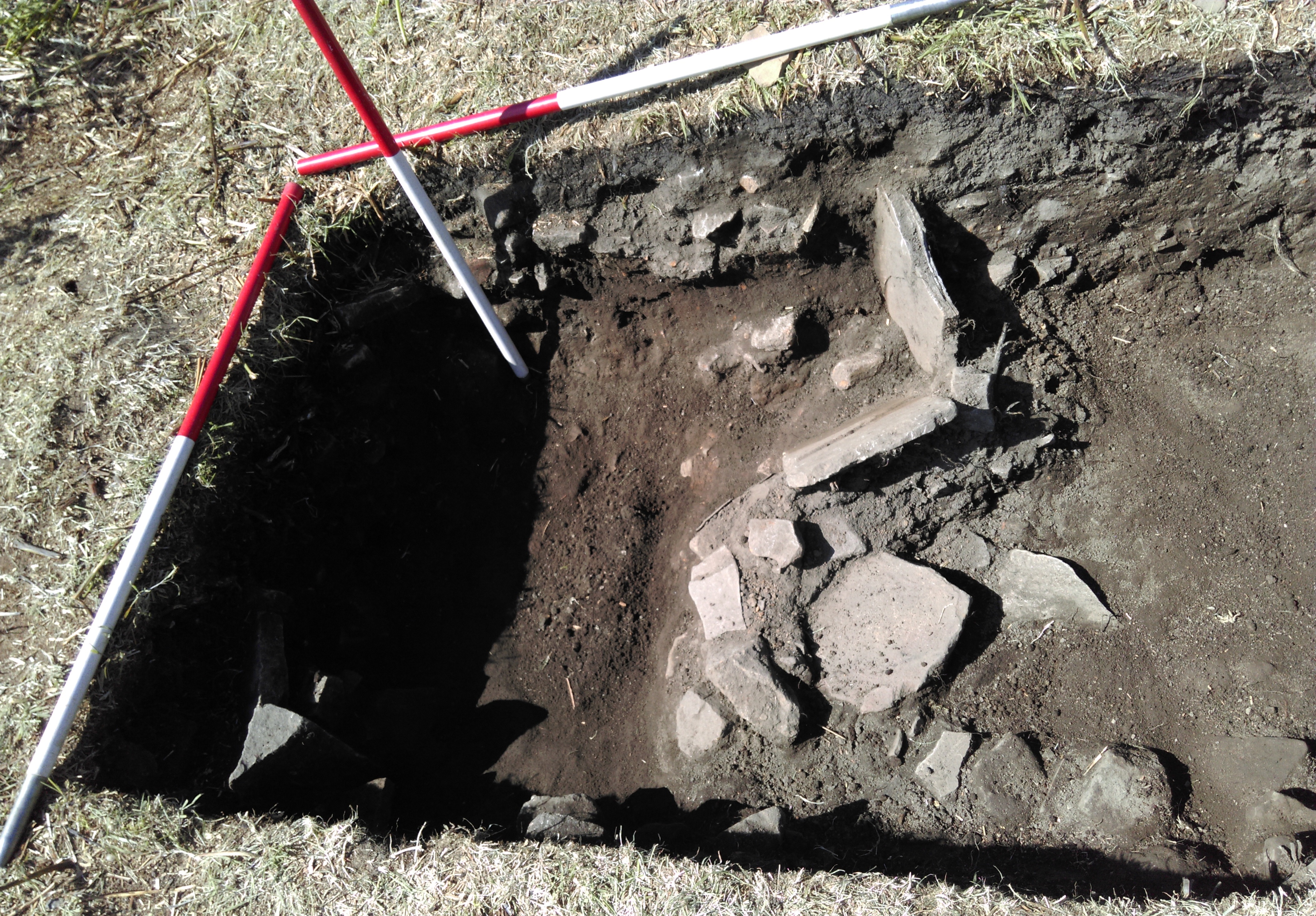
Meanwhile back in Trench 1…..we removed most of Context 2 and delved into Context 3. This contains a myriad of jumbled sandstone from pebbles to good sized rocks with a lot of voids and a small amount of brown/orange soil similar to that in Context 2.
In the afternoon one of our younger volunteers was clearing back to the top of Context 2 in Trench 1. About an hour before we finished she found a lovely little rim sherd of a hand painted square jar with recessed lid (it sat on the lip to the left & was kept in place by the rim to the right – see pic below) – probably C18 and English but there is a very slim chance it could be earlier & Dutch or Chinese (see the header image as well). Surreally enough she was digging at a proper excavation for the first time……spooky eh?
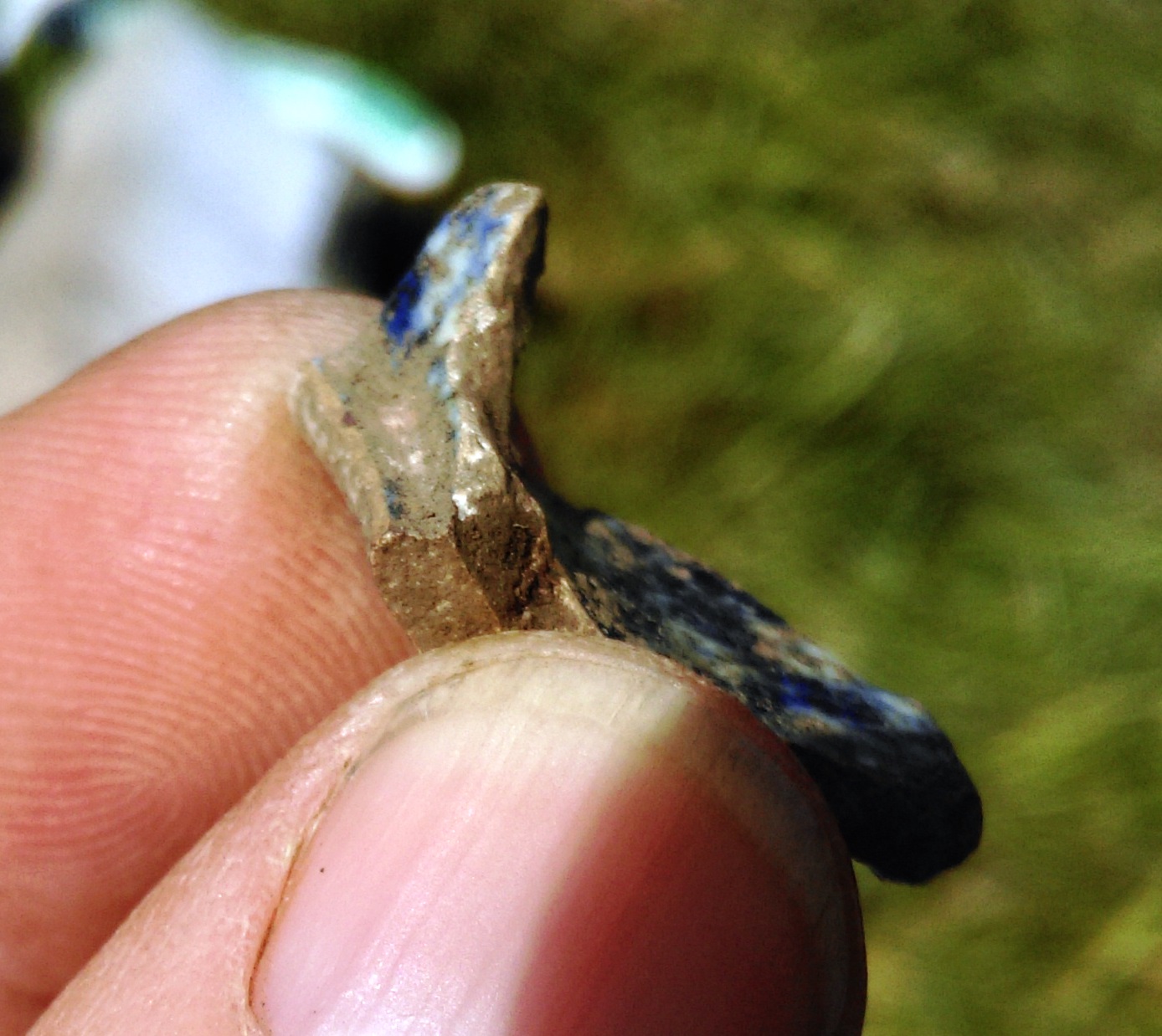
Skulldiggery – Summer Dig Day 5
Another vigorously breezy yet sunny day with lots of enthusiastic diggers helping out.
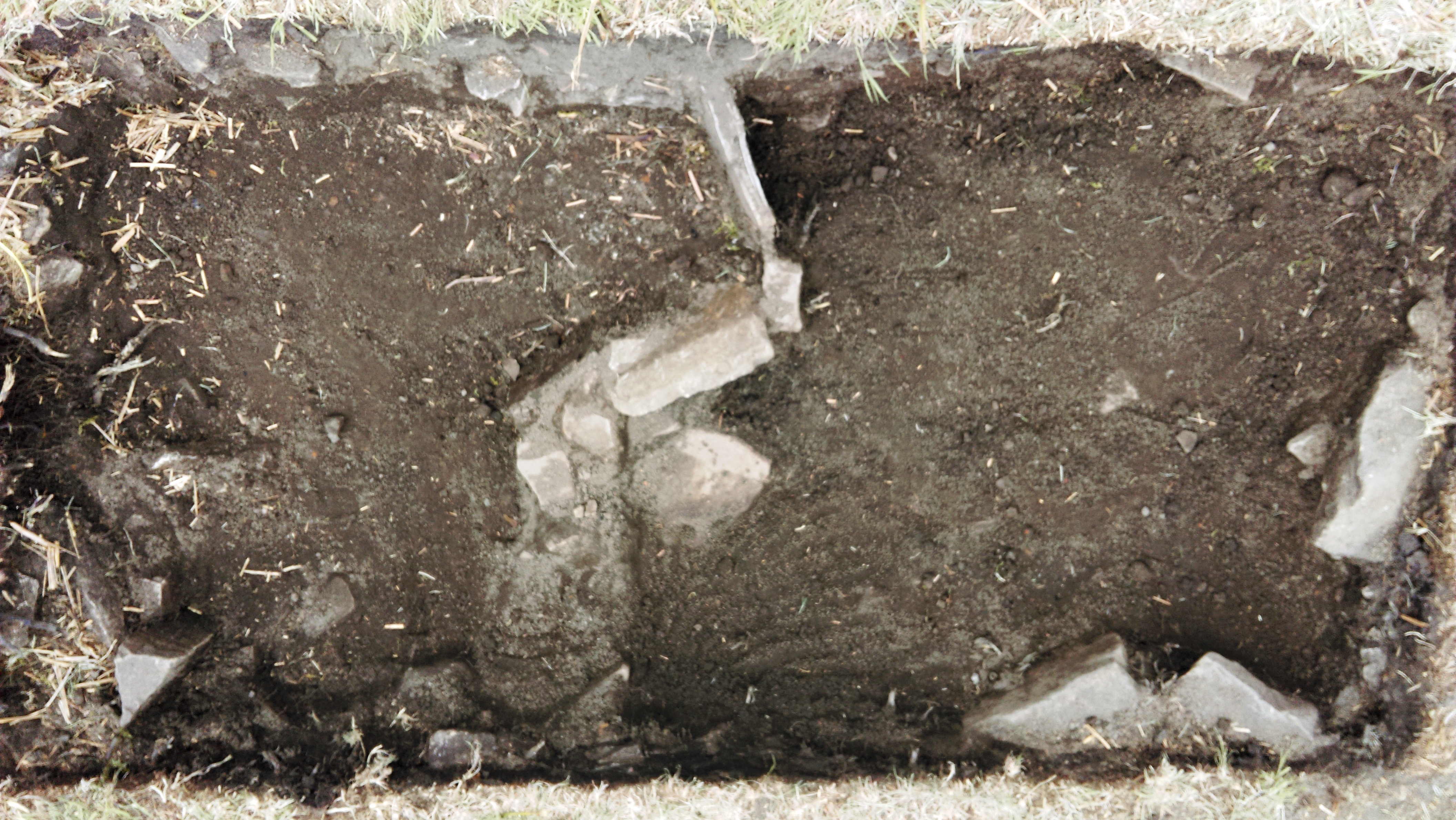
Trench 2 has revealed what may be the first proper structure (not counting the pet cairn in T1). If you look in the photo above its the top of the question mark. Two slabs have apparently been set on end and packed into place with smaller more rounded stones. It is quite possible that this represents reinforcement of a more temporary structure – possibly an attempt to fox/mustelid proof a chicken pen.
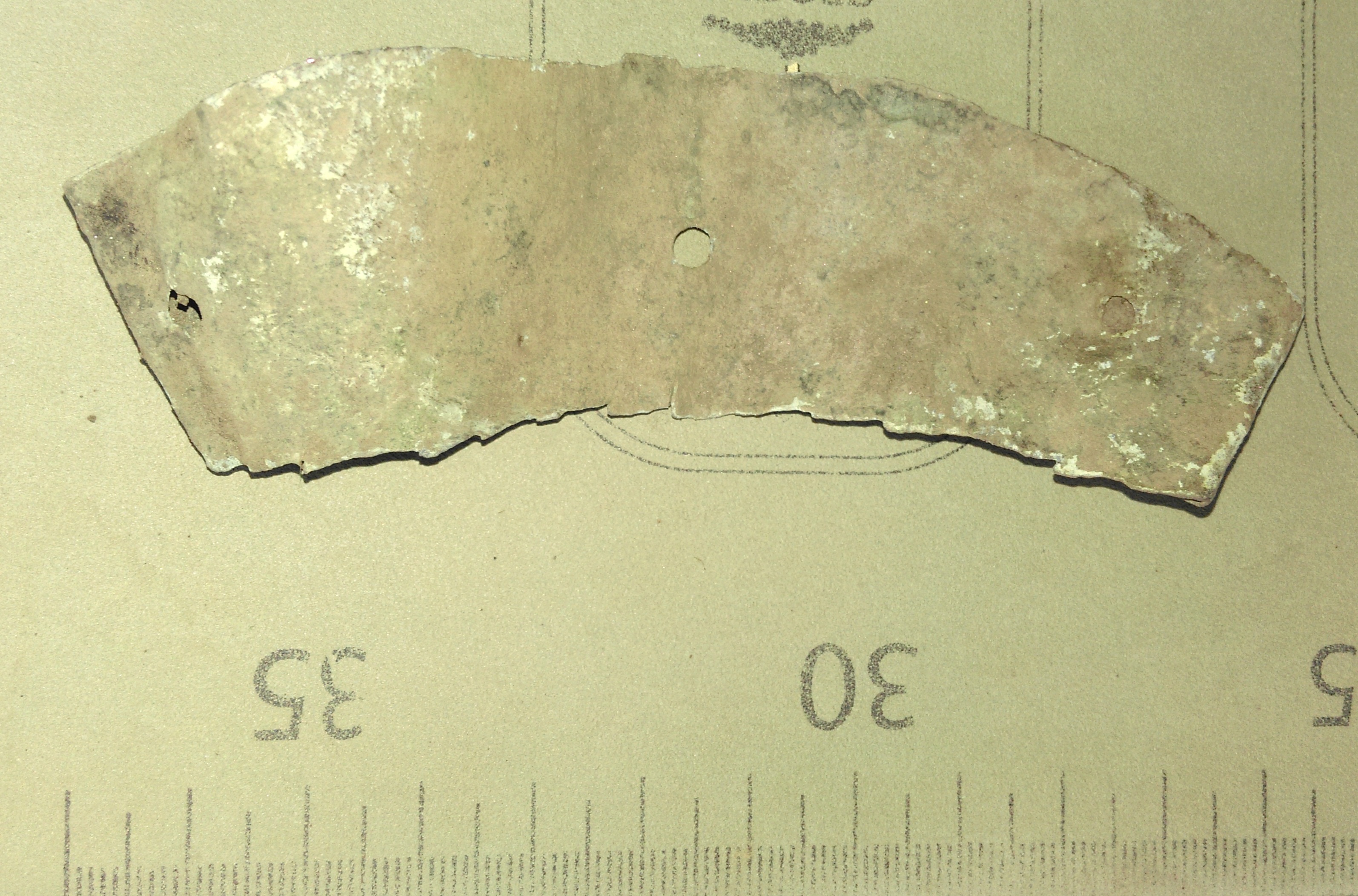
Competition for find of the day was between two things found in Trench 1 & by the same person. The rather sorry recycled copper alloy band above was the likely winner for the first part of the day. This was superceded by the discovery of the object in the header image – and no its not a fire baked spud. The top of a skull was revealed. I took over its excavation so that we had a chance of getting it lifted safely by close of play. This was managed and its now ensconced in its spud disguise. The picture below shows it during excavation. It had been underground for at least a century before we disturbed its rest. It would make a great display in the Heritage Centre museum but that is unlikely unless funds are donated for is stabilisation & preservation.
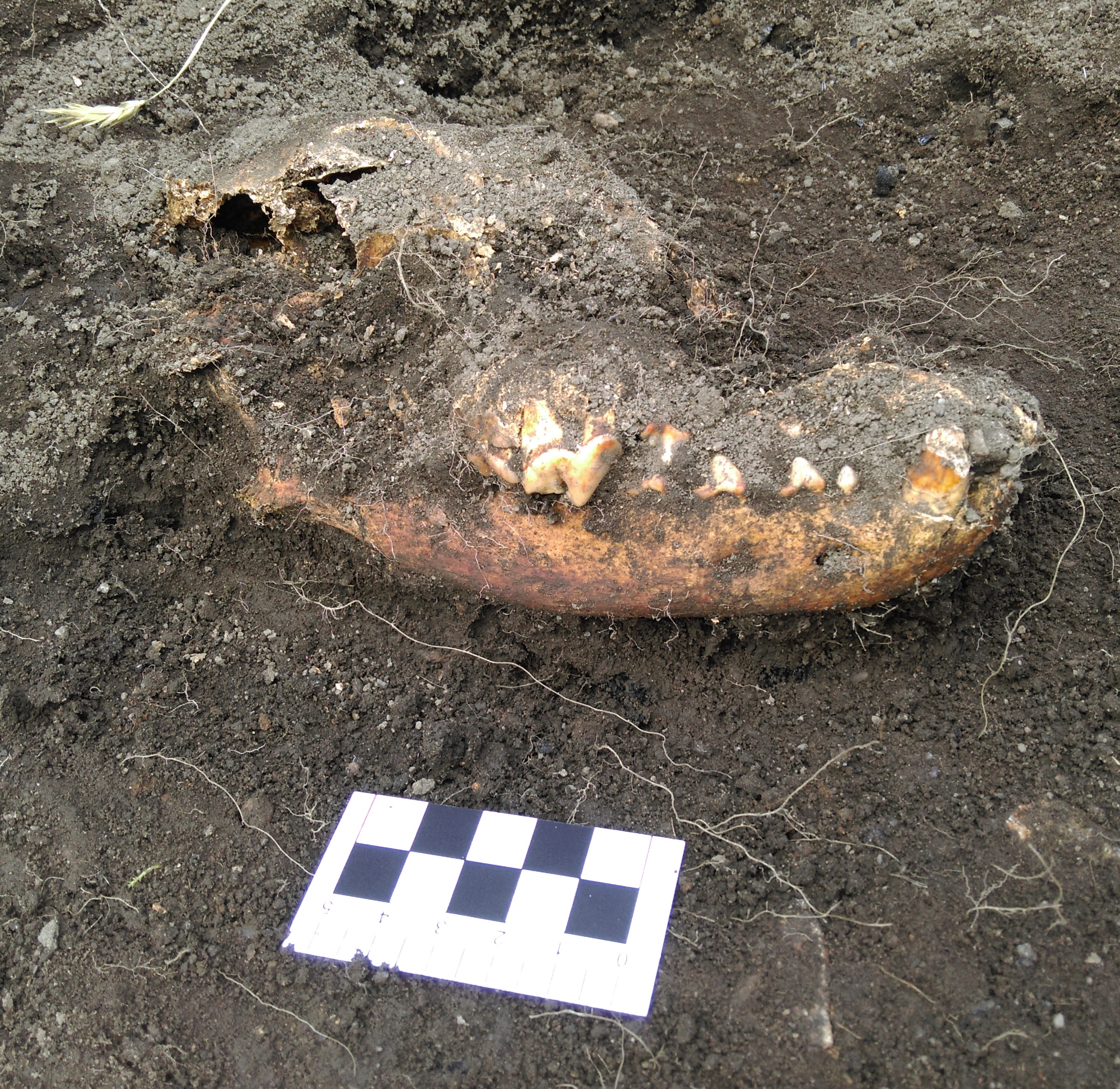
Elsewhere in Trench 1, more of context 2 was removed (see below). This is now nearly as deep as context 1 (topsoil) and is full of voids, not orange soil, between the stones. I am beginning to suspect it may have to become a new context.
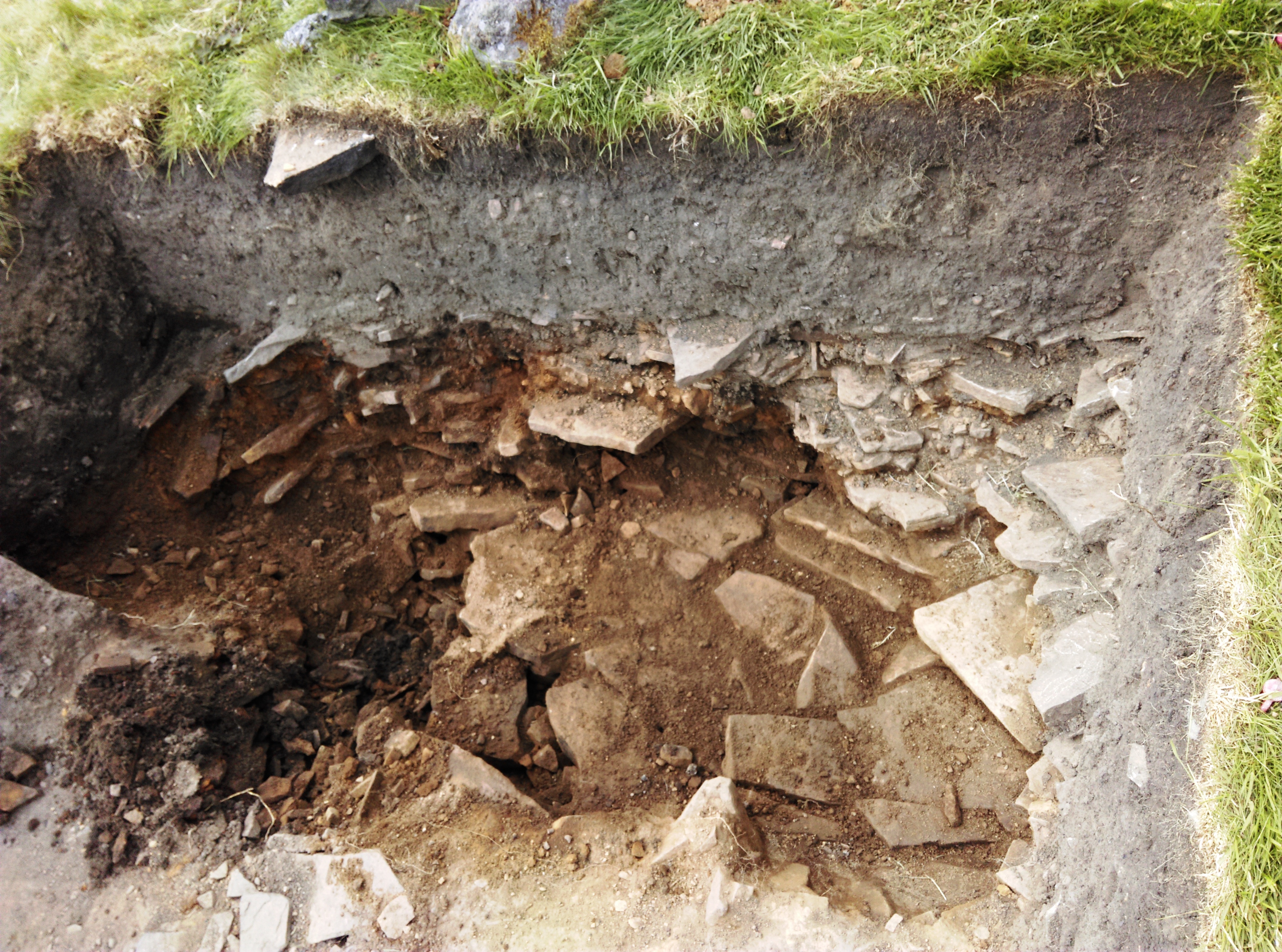
If you want to have a wee delve into Pendle’s secrets, come and join us. The trenches will remain active until the weekend. You could even help pick a name for the piecemeal pooch.
In The Sun Out Of The Wind – Summer Dig Day 4

It was a bit of a wild start to the day – the fertilizer sack I was a using as a toboggan (whilst waiting for the others) on the steep slope of the dam wall kept trying to blow away. However once on site we were nicely sheltered and above the gods tried to come to get their heads around how to play noughts & crosses (see above).
We opened a second trench on a lower platform. The top soil here was very thin and the first proper context (Context 2 T2) (see below) was similar to that of Trench 1 but the type of stones are more random & the soil is much like the top soil.
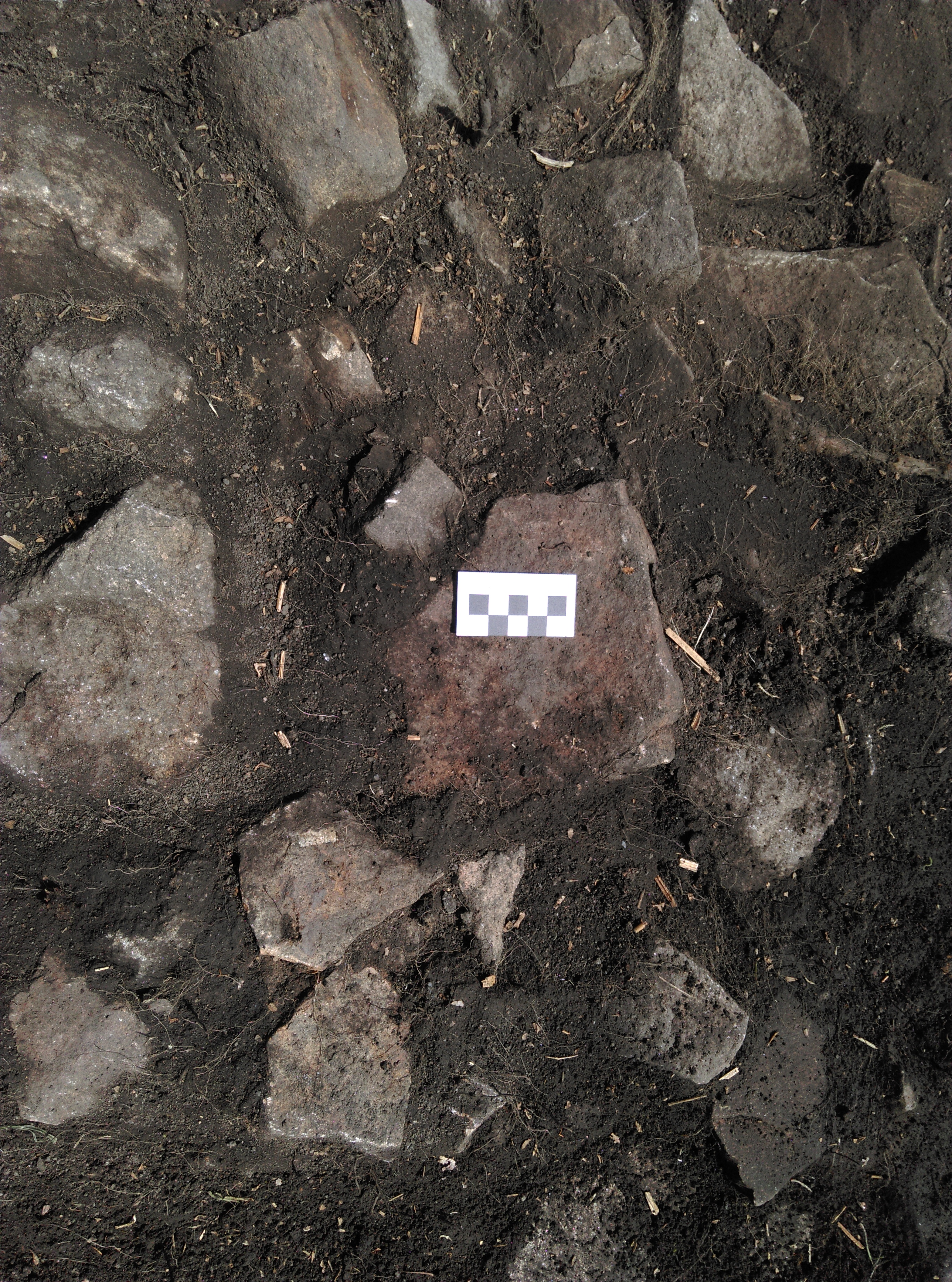
From here the pick of today’s finds came including two sherds of trailed & combed, two sherds from a child’s rhyme or motto cup, a sherd with EMPLE on it, & the find of the day. This last (pictured below) was a stylus used on a writing slate.
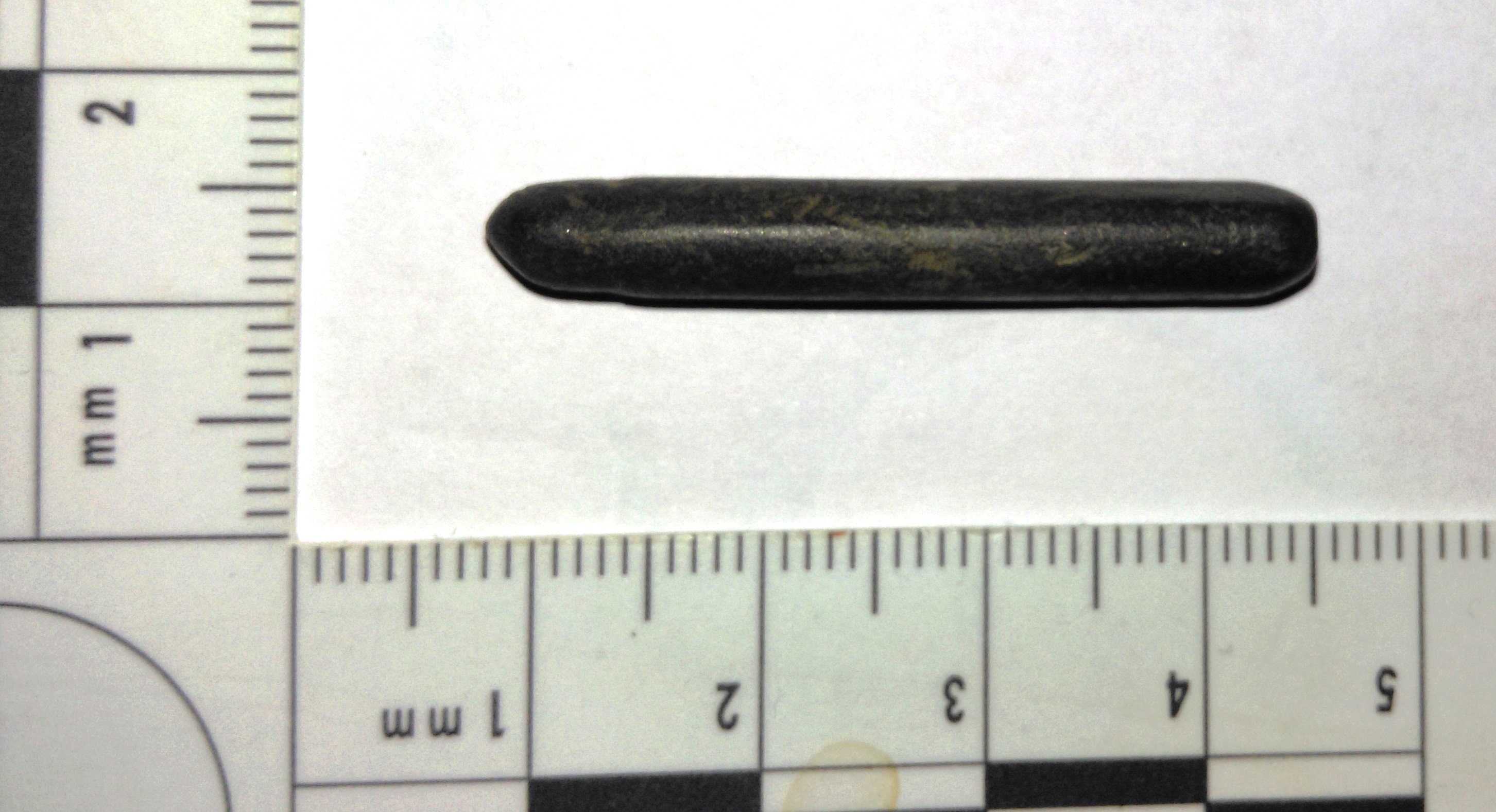
And finally back in Trench 1 (T1) we continued down into context 2 – of the meagre number of finds the most significant was a small rounded pebble of sandstone that had been very heavily heat effected. As you can see in the end section below this context is also quite thick – what lies below?? Why was this material placed there? Come along & find out – see you there?
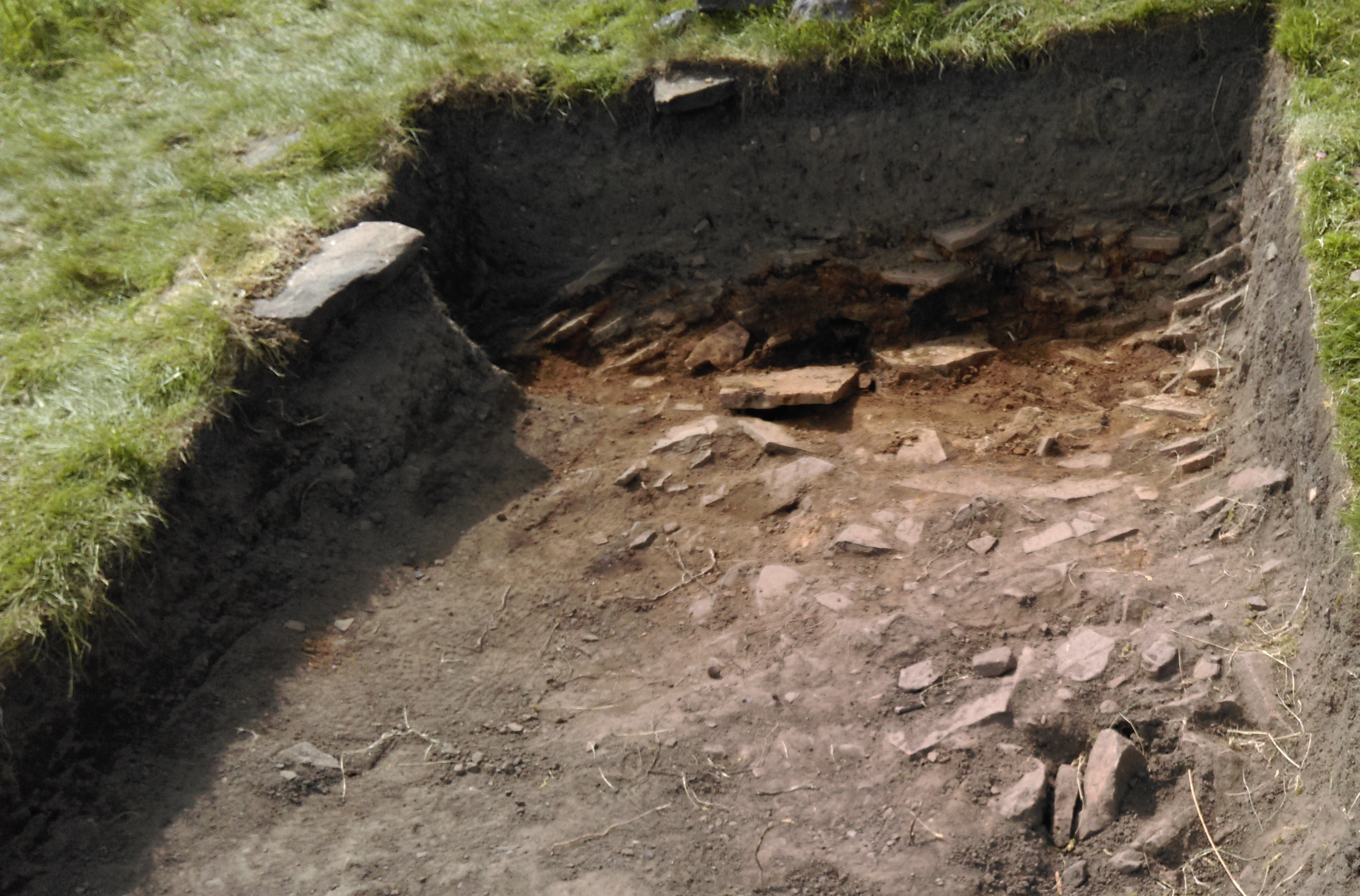
And Still It Shone – Summer Dig Day 3
We were joined today by some budding future diggers who all produced some interesting stuff. Find of the day went to a rather sweet little suspended weight (top row 2cnd right in the pic below) – possibly from a clock. More Victoriana today, including some more cranberry glass, part of a commerative tankard, & a complete glass stopper. Some bones were also found associated with a small pile of stones. They appear to be from a pet lamb or puppy. In the bottom left of the picture are three sherds that date to the late eighteenth century. The average age of objects at this lower level is older though small pieces of early twentieth century pot are still present (probably due to worm/mole activity).
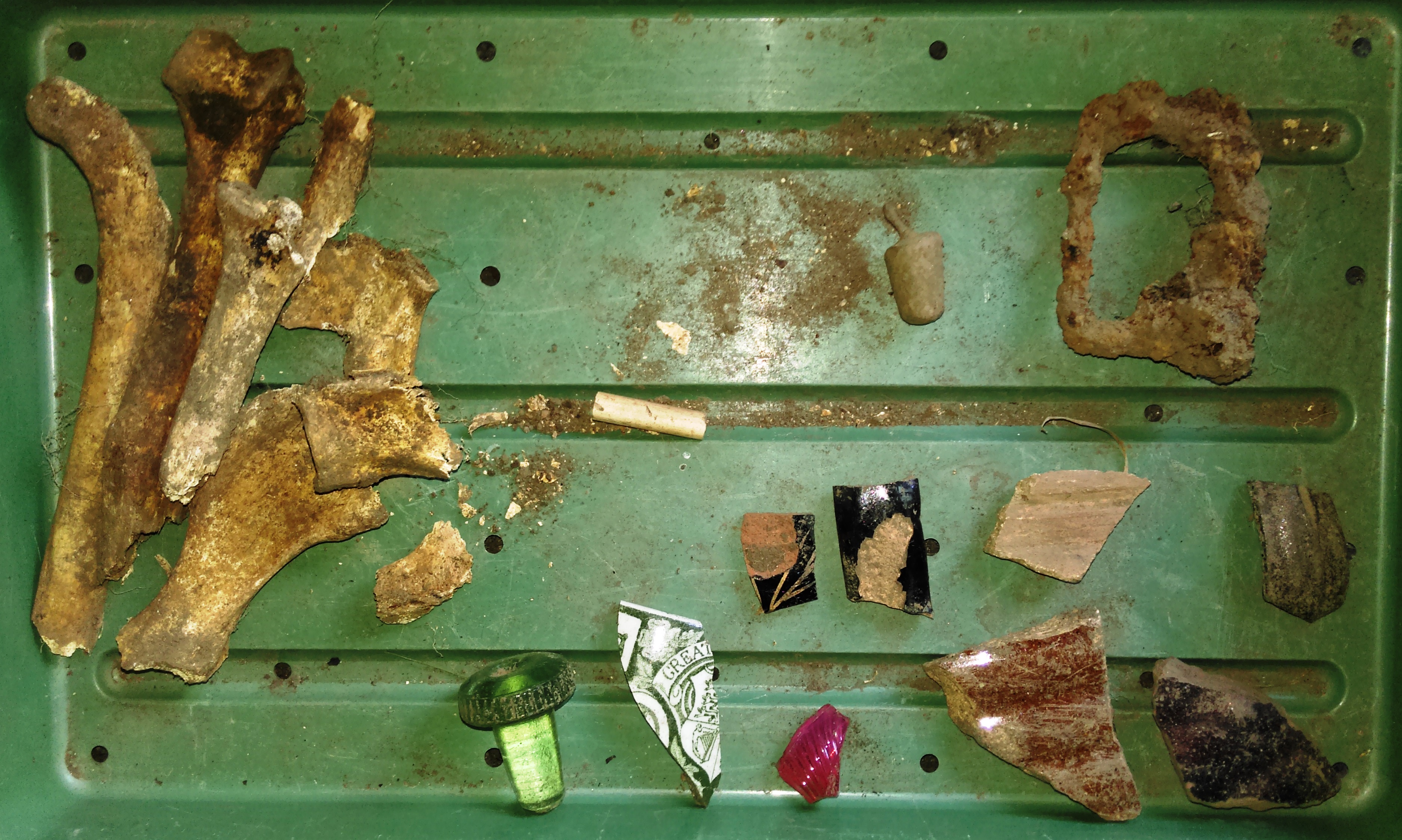
Today trench was extended east by 500mm but at the west end the direction was down. The image below shows the top of Context 2 (the first one below the rather deep top soil) before excavation started on it.
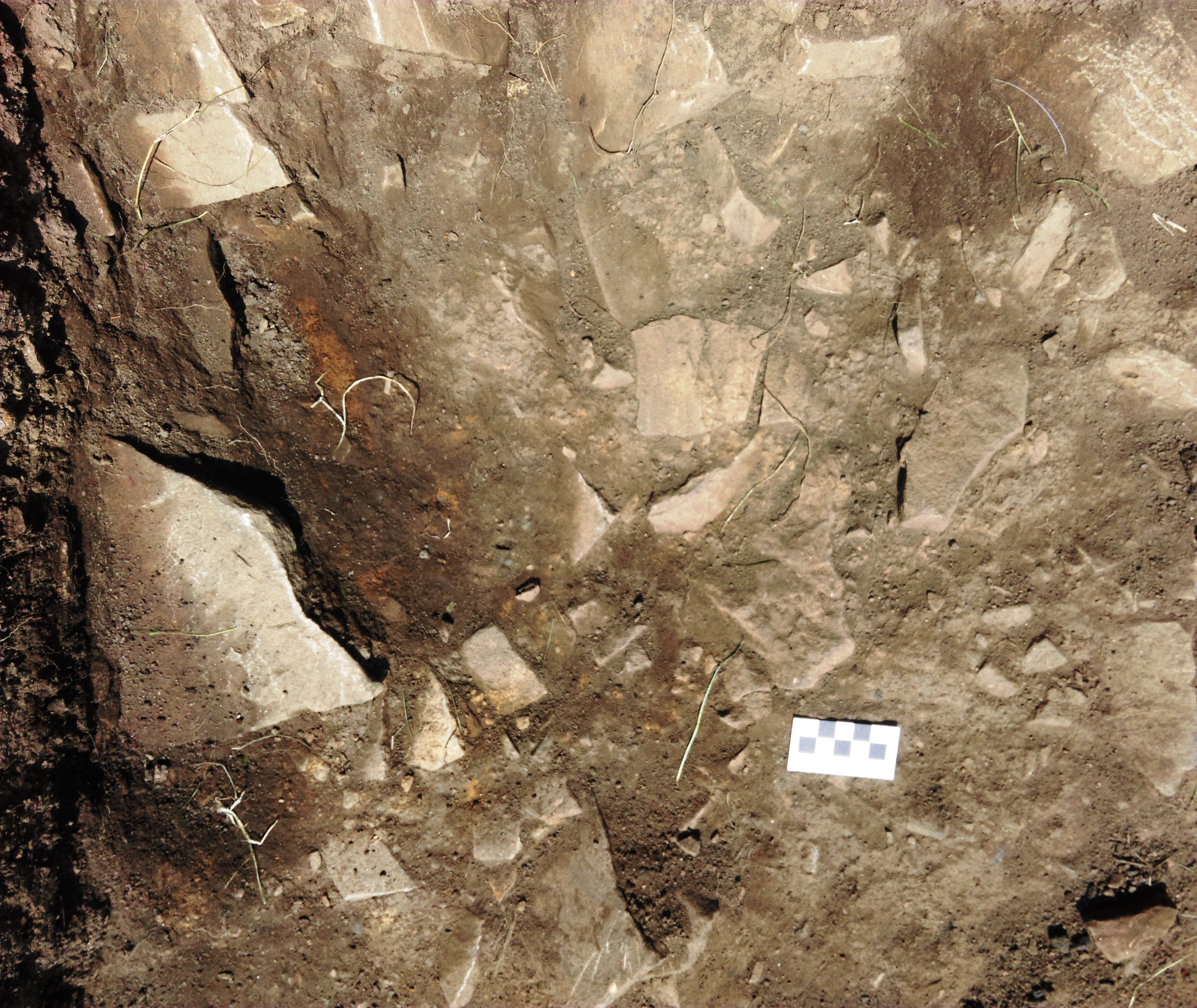
As you can see in the one spot near the section wall – the material between the myriad pieces of flat sandstone is an orange colour. The lie of the stones prove this layer is not natural but so far the context has been rather sterile. The header image shows the sum total of finds from this strata so far. The slipware is a sufficiently large sherd to allow to presume it was probably contemporary with the surrounding material. It probably dates to the 1600s. This is about the time that stone buildings were erected in the settlement.
Target tomorrow is to find context 3 – we may also open a new trench over a tantalising pile of stones – come on up & have a dig or a look – the views are still fantastic.
Days In The Sun – Summer Dig Day 2
The sun warmed us today we continued clearing back to the context discovered at the end of yesterday. We were joined by a few debutant diggers both young & older (see below).
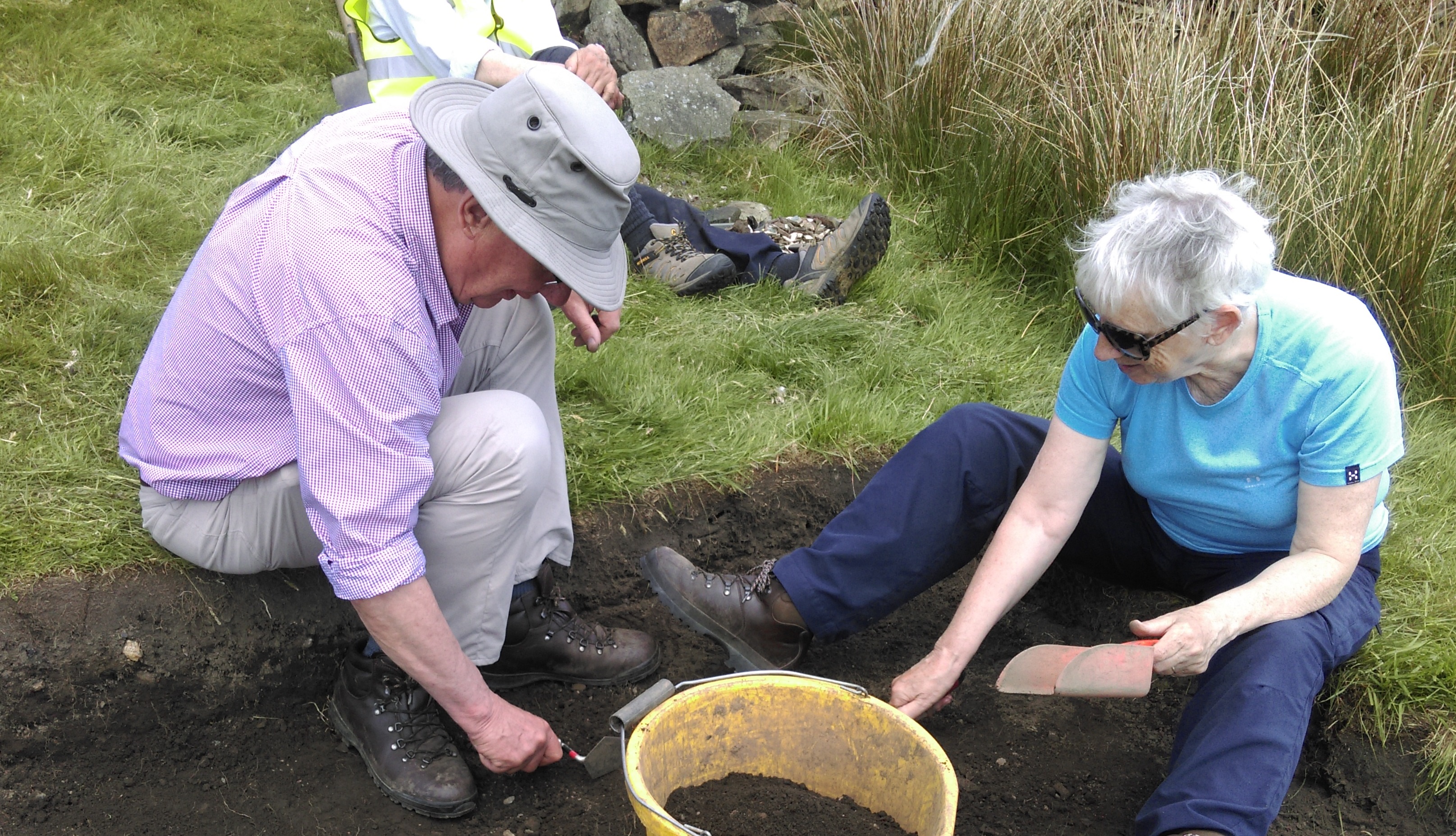
One of our young diggers found our largest piece of metal to date. Its a …. thing.
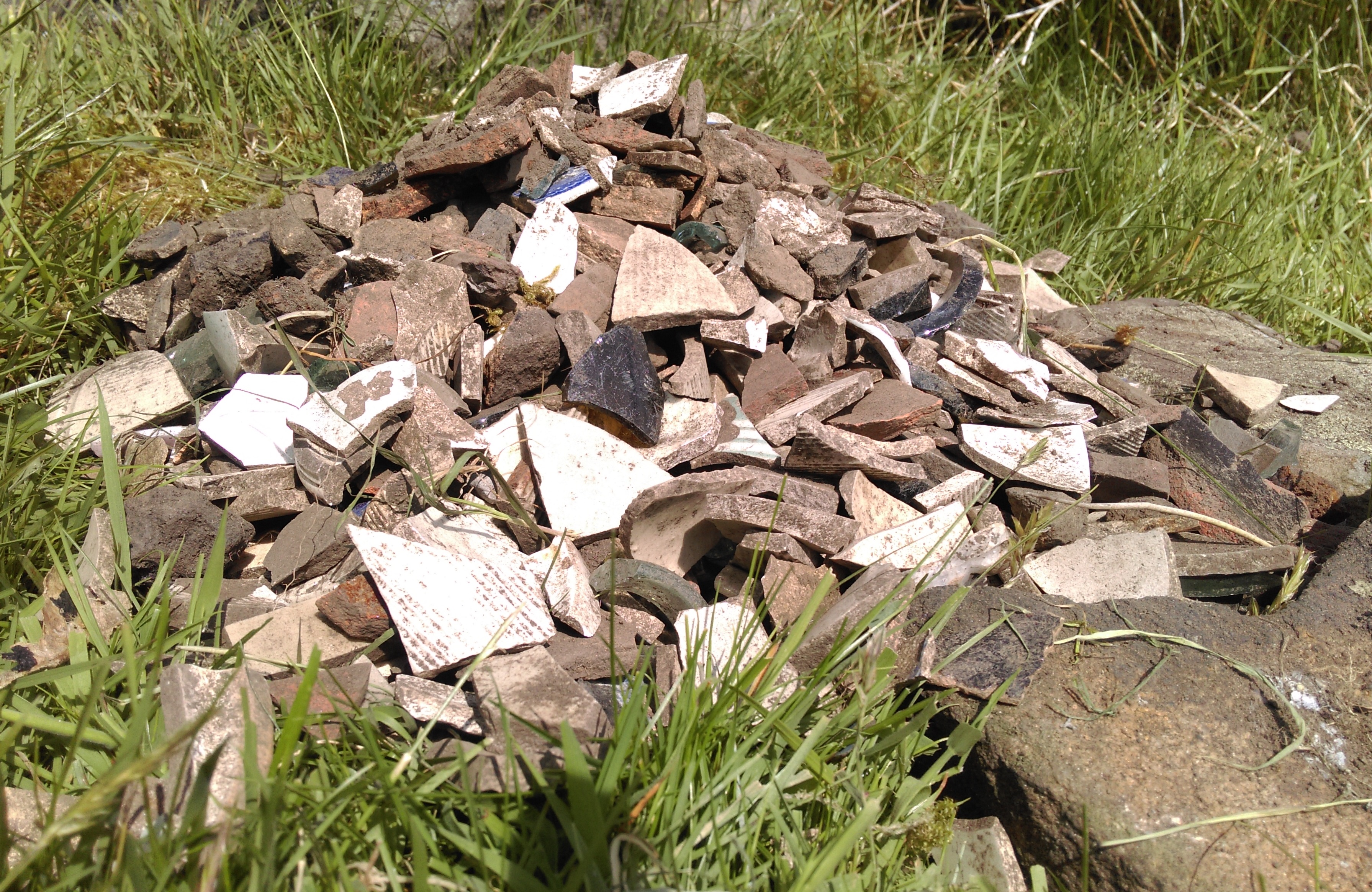
While the rate of finds has slowed we have been adding to our own Monte Testaccio (see above) and have found a tiny but pretty piece of Staffordshire Combed & Trailed Ware. Dating to between c1675 and c1770 AD, this is our oldest artefact from the trench so far, and was flash stuff in its day. Hopefully tomorrow will take us another century or two back in time. Hope to see you there.
Summer Dig Day 1
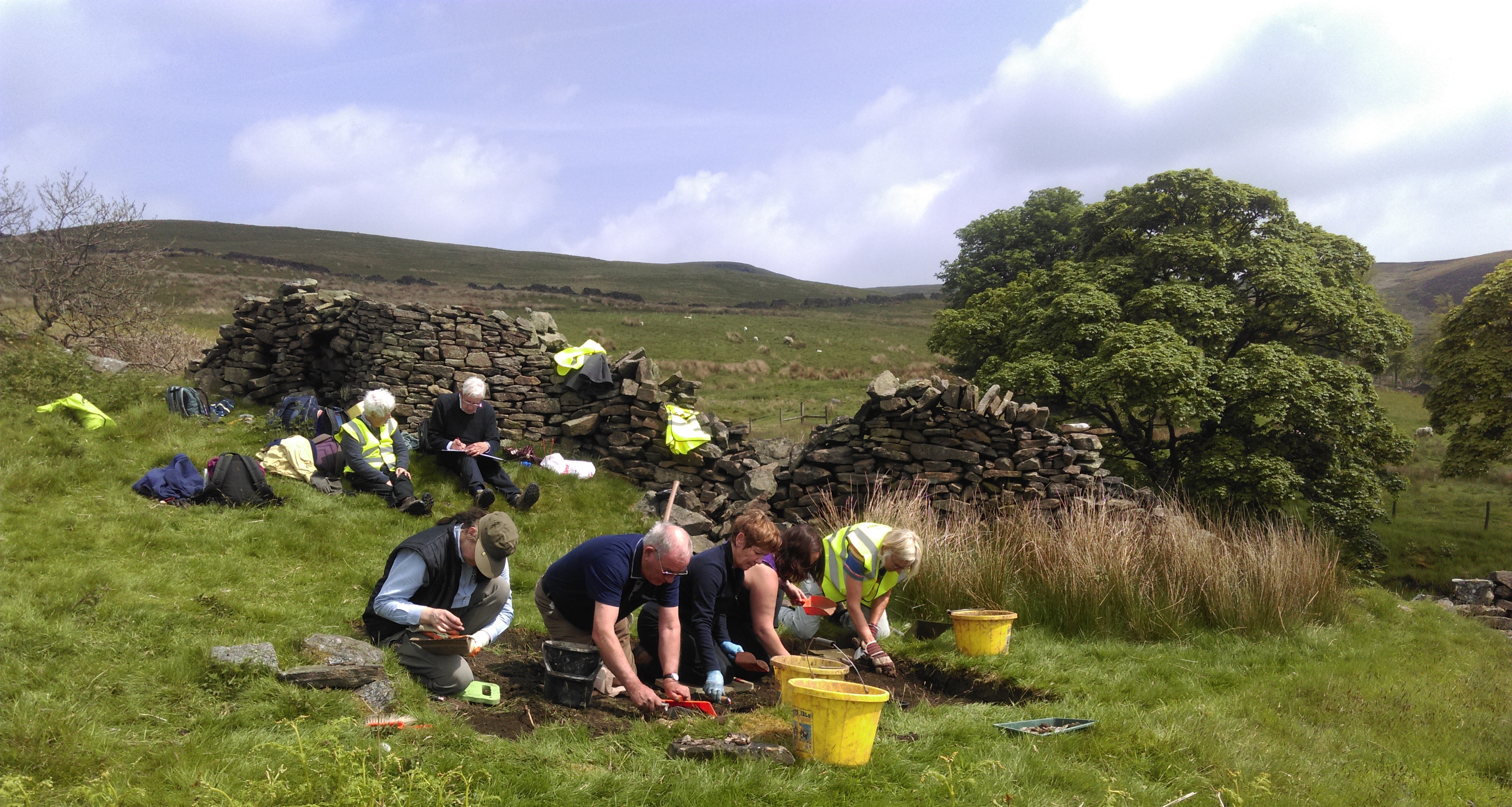
Broke the ground on the new dig today – loads of Victorian pot in the top soil – down to our first proper context by day end. The dig will be open until next weekend 10:30 am to 3 pm (at least) each day (unless overly inclement). So please feel free to wander along for visit or dig if you have some spare time. The view from the trench is pretty good too.
As you can see from the header picture the top soil is very deep – the photo below is a closer view of the first proper context. Come & join us tomorrow to see what lies beneath.
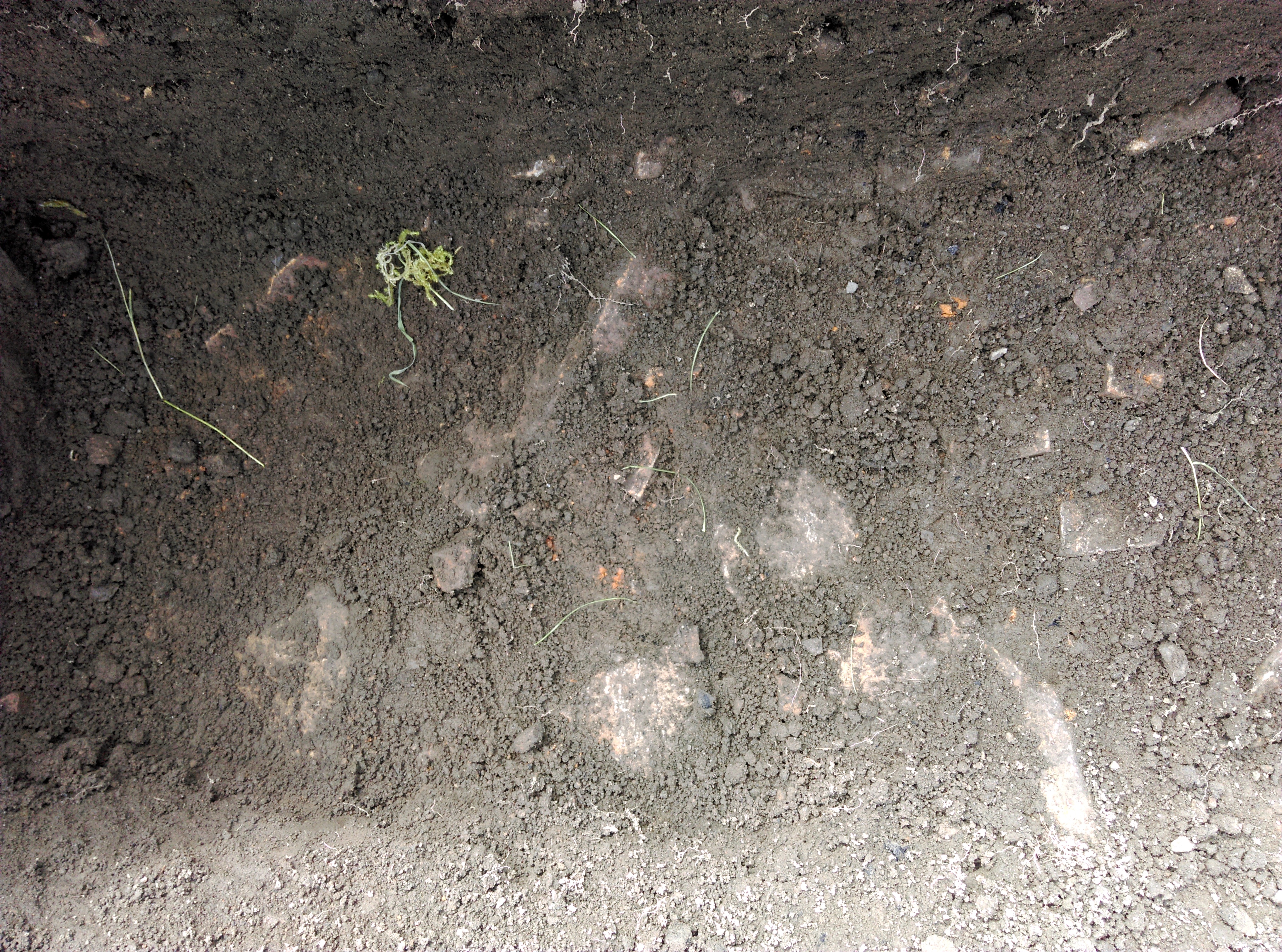
Annual General Meeting 2016
- Chairman David J A Taylor
Hon. Secretary Jean Hardman
Treasurer Roger Grimshaw
Heritage Centre Liaison Andrea Smith
Heritage Gayle Wray
Publicity Pam Worrell
Jean Hardman, Secretary
Lancashire upland’s first excavated south looking lime kiln??
Well the kiln dig is finished – well the digging stuff out bit is.
In classic archaeological fashion things revealed themselves as we ran out of time. However what we have found is the bowl & flue from the last firing (see pics), charcoal (hopefully dateable), and a tiny sherd of gritty ware pottery which probably isn’t contemporary.
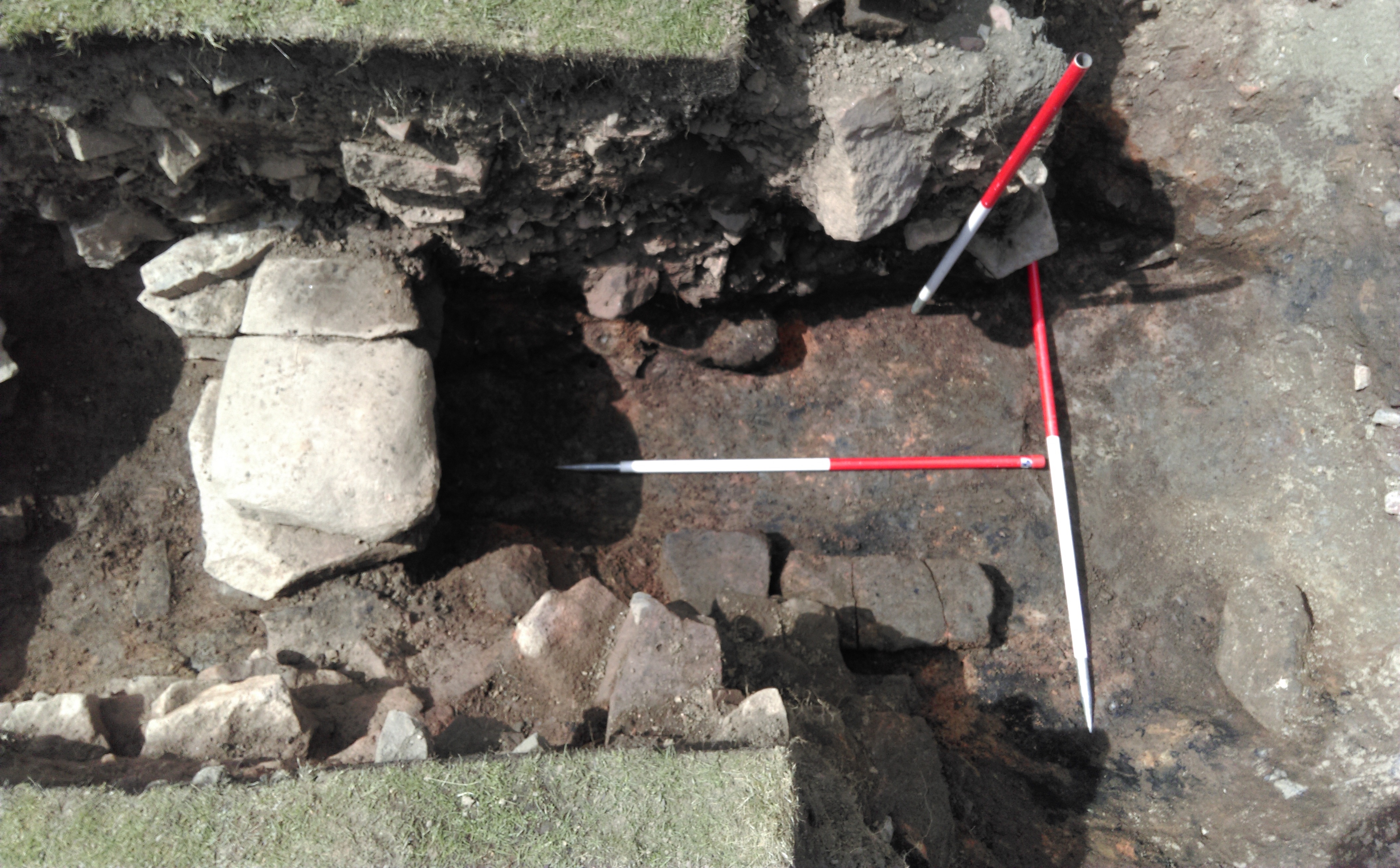
After wind, sleet, hail & snow, our last two days on site were beneath sky like this (from the morning of the last day)
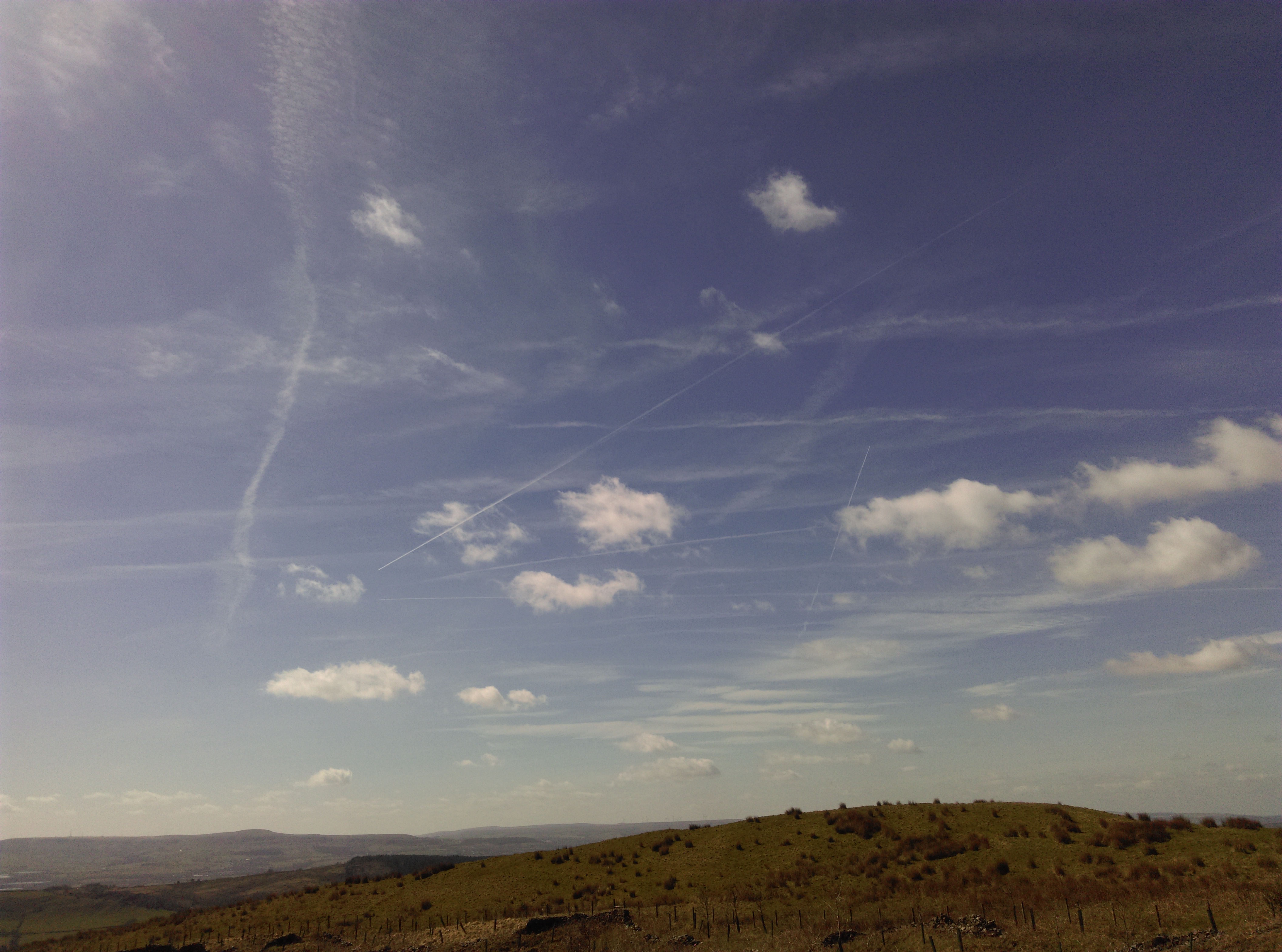
Southfield Methodist Chapel
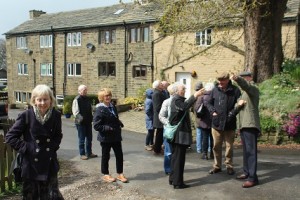 A sudden flurry of snow didn’t deter visitors to Southfield Chapel and hamlet near Nelson organised by The Friends of Pendle Heritage on Wednesday 27th April. Believed to be one of only two remaining chapels of its type, John Wesley preached at this location several times in the late 1700’s whilst visiting his friend William Sagar. William promised to incorporate a Chapel within the barn he was yet to build which was completed in 1797, after Wesley’s death.
A sudden flurry of snow didn’t deter visitors to Southfield Chapel and hamlet near Nelson organised by The Friends of Pendle Heritage on Wednesday 27th April. Believed to be one of only two remaining chapels of its type, John Wesley preached at this location several times in the late 1700’s whilst visiting his friend William Sagar. William promised to incorporate a Chapel within the barn he was yet to build which was completed in 1797, after Wesley’s death.
A most informative talk was given by Mrs Pat Frankland in the 220 year old upstairs chapel where the sounds and smells of the farm were experienced at first hand! A hearty home-made lunch was then served downstairs in a less fragrant atmosphere by ladies of the chapel, with some members being tempted by second helpings!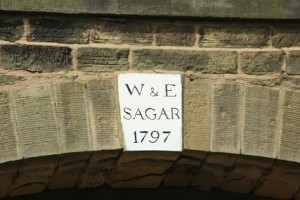
Afterwards the exterior of the buildings in the hamlet were explored with their early datestones and beautiful gardens accompanied by llamas grazing in the field.
One visitor traveled across the border from Ilkley, to visit for the first time the place of his baptism. He enjoyed an emotional reunion with a friend who still recognised him after 79 years!
Craggs Kiln
We have about 10 more days to finish the kiln dig & things are hotting up (relatively speaking).
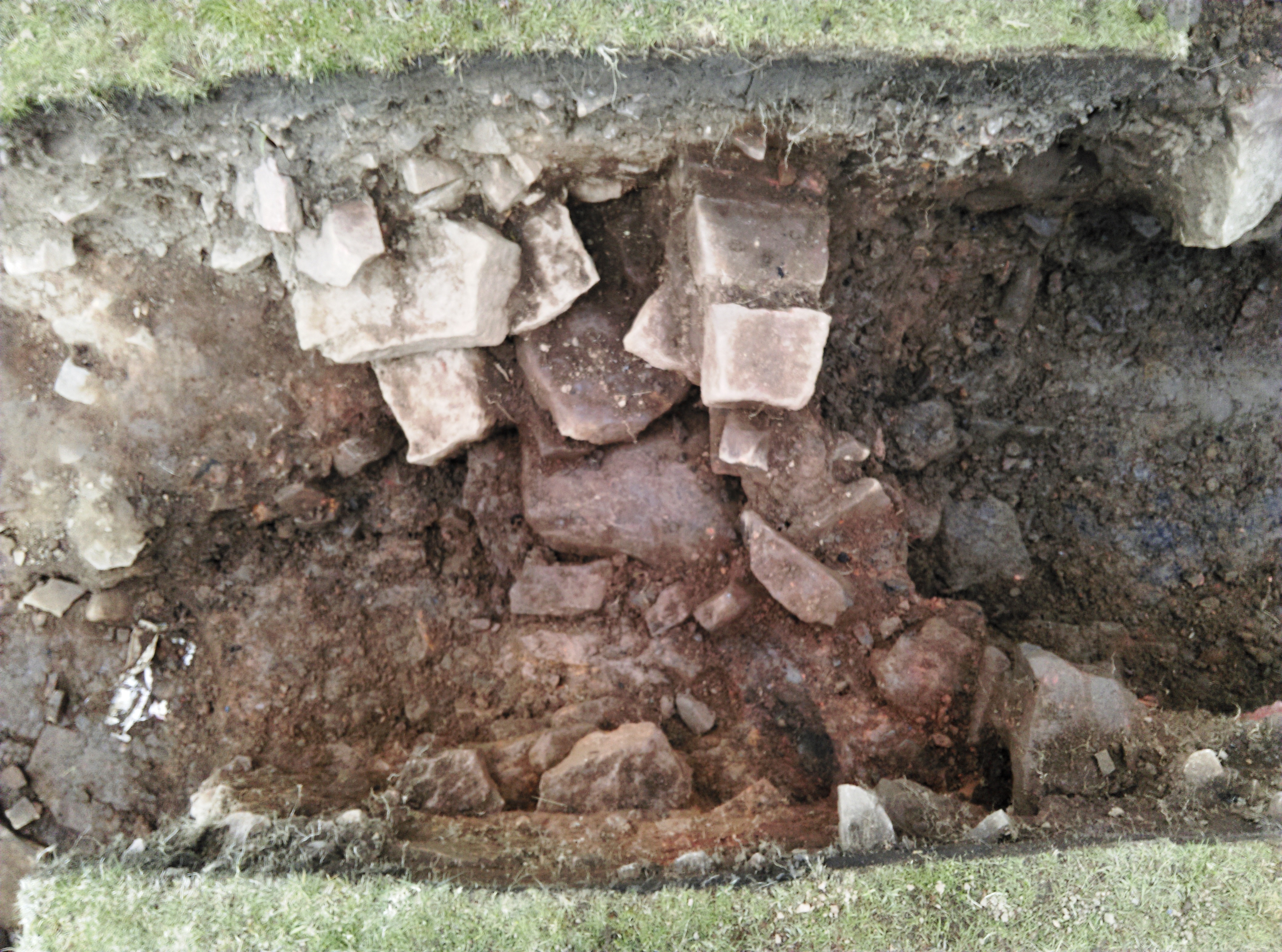
The wall structure (above) seems to have been repaired at least twice. Note colour of the infill either side of the feature. We have lifted a lump of charcoal (below) from the reddish material.
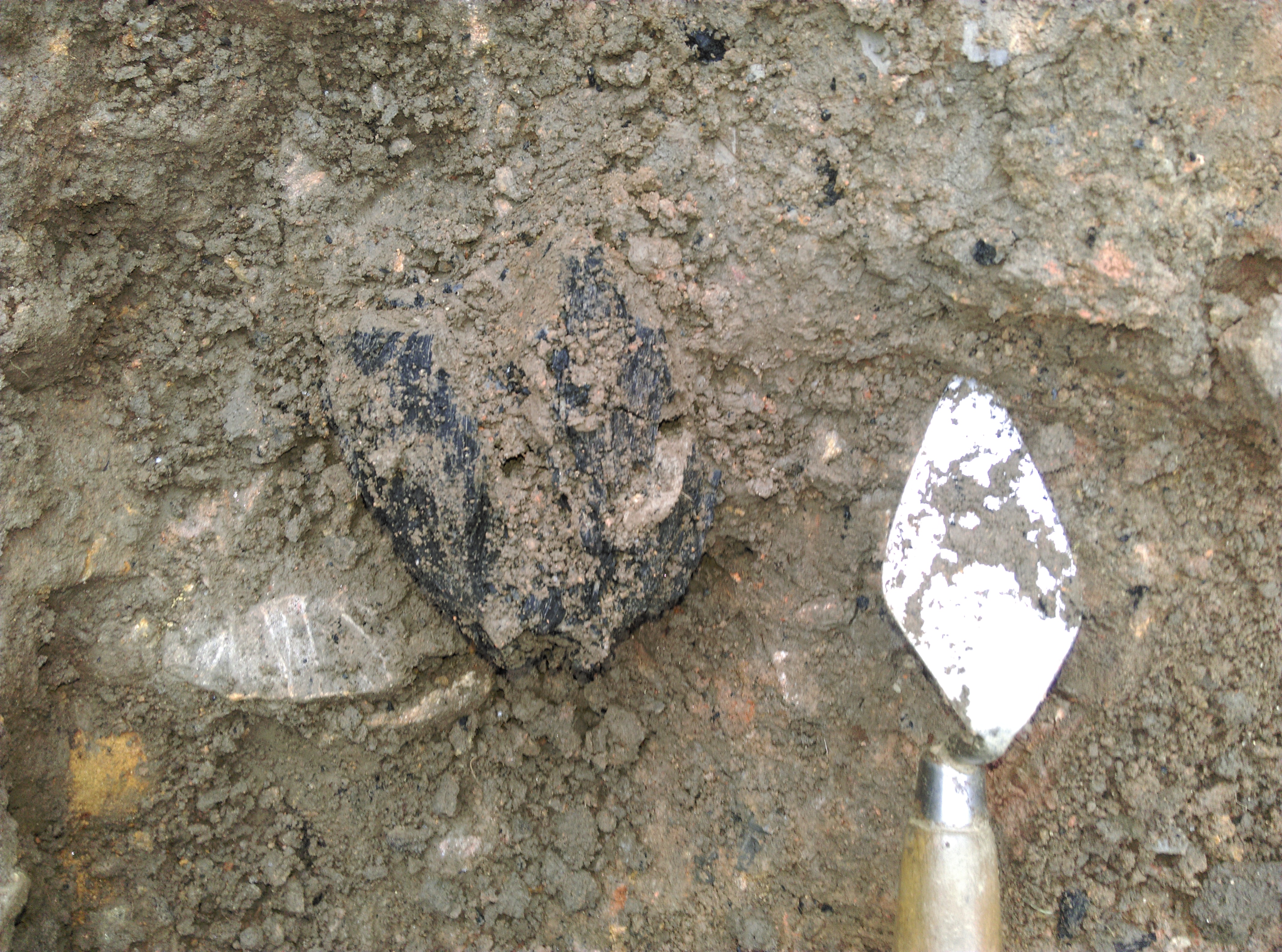
We will be digging every day the weather is reasonable (on site approx 10:45 to 14:00 hours) but please check via email the day before if you want to know if someone will be on site.
Spring Trip to North East
Trip to Alnwick 11/12/13th April 2016
The coach (from Hodgsons as usual but without our usual driver Ian) left promptly from opposite the Malt Kiln in Barrowford at 8.30 am on Monday 11th April.
We drove to Piercebridge where we had coffee/tea and moreish shortbread biscuits at the George Hotel, a 16th century coaching inn. A clock in the George Hotel inspired Henry Clay Work’s 1876 song “My Grandfather’s Clock”. From then on a tall freestanding clock became a “grandfather” clock.
By the river are the remains of the Roman Bridge, part of a large bridge which carried Dere Street, the Roman road, which linked York with Corbridge, across the River Tees. The bridge was wood on a stone foundation. The remains now lie high and dry on the south bank of the river which has moved northwards since the bridge was built.
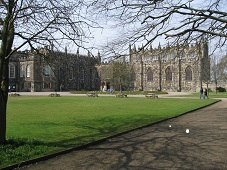 At Auckland Castle we headed for the café for lunch and were pleasantly surprised to find it in a rather elegant library, with waitress service. We were given a conducted tour at 2.00 pm. The castle, which has been owned by the Church of England for more than 800 years, was the former palace for the Prince Bishops of Durham and is still the residence and official headquarters of the Bishop of Durham. Over time the building was added to and altered by a series of Prince Bishops. St. Peter’s Chapel is one of the largest private chapels in Europe and was built by converting a medieval banqueting hall. In the dining room are 12 of the 13 celebrated 17c paintings by Francisco de Durban of Jacob and his sons, which the Church Commissioners wished to sell but these plans were shelved after a donation of £15M from investment manager Joseph Rutter, who also found that his charity, the Auckland Castle Trust, owned the Castle as well!
At Auckland Castle we headed for the café for lunch and were pleasantly surprised to find it in a rather elegant library, with waitress service. We were given a conducted tour at 2.00 pm. The castle, which has been owned by the Church of England for more than 800 years, was the former palace for the Prince Bishops of Durham and is still the residence and official headquarters of the Bishop of Durham. Over time the building was added to and altered by a series of Prince Bishops. St. Peter’s Chapel is one of the largest private chapels in Europe and was built by converting a medieval banqueting hall. In the dining room are 12 of the 13 celebrated 17c paintings by Francisco de Durban of Jacob and his sons, which the Church Commissioners wished to sell but these plans were shelved after a donation of £15M from investment manager Joseph Rutter, who also found that his charity, the Auckland Castle Trust, owned the Castle as well!
We checked into the Hogs Head Inn, Alnwick (named after the tavern in the Harry Potter books)
On the Tuesday we visited Barter Books which is one of the largest second hand book shops in the country sited at the former railway station. Its “Keep Calm and Carry On” poster is one of only two surviving wartime originals, the template for the slogan which you now see everywhere. A model railway runs overhead between the book cases. There is a restored station waiting room used as seating for the café and a huge room lined with over forty glass cases containing many antiquarian books.
We decided not to go to Alnwick Castle gardens because of the heavy rain. Instead we all visited the Castle which is, after Windsor Castle, the largest inhabited castle in England. The Duke and Duchess of Northumberland reside in Alnwick Castle in the winter months, and this is most evident in the Library, created by the 4th Duke in the Prudhoe Tower to house the 14,000 catalogued books in the collection. In addition to the books, the room now contains family photos, a television and a large collection of ingredients for cocktails! The walls of the State Rooms, several of which have been restored by the present Duke of Northumberland, are hung with Italian-style silk (now made in Suffolk) and artworks by masters Titian, Tintoretto, Turner, and there are several paintings by Canaletto. There is a gallery with china which has been collected by the Percy family over hundreds of years. Recently Alnwick Castle featured as Hogwarts School of Witchcraft and Wizardry in the first two Harry Potter films, also as Brancaster Castle in Downton Abbey
In the afternoon there was a coach tour around local sites: Alnmouth, where we didn’t stop, Craster where we visited a café and some bought kippers from the famous L. Robson and Son and finally Seahouses where one could take a boat trip to the Farne Islands, one of the UK’s top wildlife sanctuaries.
On Wednesday we visited the fine prehistoric site at Lordenshaws, an Iron Age fort. It was not easy to find in the mist. It was built at least 2500 years ago and is enclosed by three sets of banks and ditches within which the remains of seven round houses can still be seen. It has two entrances on the east and west sides, each with a holloway leading up to it. On a large rock a hundred yards away were some “cup and rings” carved in the stone.
We spent the rest of the day at Vindolanda where a dig was taking place. There was a model of the site near the entrance. One of the archaeologists gave us an introduction and mentioned the first and only Roman wooden toilet seat ever found! The fort is situated on the Stanegate, the Roman road connecting Corbridge with Carlisle. Construction started in the early 80s which saw the erection of five timber forts leading to the present stone fort which was built in the early 140s. The early timber forts were approximately twice the size of the present stone fort and the famous Vindolanda tablets were found in the earliest of these. On entering the site at the west end you pass into the vicus or civilian settlement and a temple can be seen, also a bath house. Passing down the west street to the fort, on the right is a mansio (an early form of hotel) and on the left a tavern. On the right, entering through the west gate, can be seen the headquarters building, commanding officer`s house and the granaries. To the left can be seen barracks and other buildings. Passing through the fort we walked down the slope to the tearoom and the excellent museum which has been refurbished in recent years. The Vindolanda Tablets were on display and also beautiful jewellery. A whole day would be needed to see everything including watching the volunteers digging in the cold.
We had a comfort and cake stop at Tebay services and returned to Barrowford.
Pendle’s Hidden Valley – Impressions Of The Past
Welcome to the first Pendle’s Hidden Valley blog of 2016. The first fieldwalk – around Admergill (thank you Brian & Richard) – takes place this Saturday & we have already been digging up at the Craggs kiln site. Behind the scenes things have been happening too. Lynn H has been doing sterling work raising funds & working with David T and others on a database. Gayle & Janet have been trawling the reference libraries for clues. Paul & I have been doing mid week forays with Dot the chert hound into the hills while the vegetation is down. Now back to the dig. In the last week we have joined the top & middle trenches. As usual no questions have been answered yet but more have been raised. We have made a few interesting discoveries.


Firstly the wall above – 3 courses deep so far & 5 pieces of charcoal recovered. Secondly another wall (2) – pictured below – where another piece of charcoal was found. This takes the total tally so far to 8. Thanks to a generous grant from the Robert Kiln Trust we will be able to submit some of these for C14 dating.


Finally, near close of play today – we uncovered what appears to be a heel impression (below) in a clump of clay fill between the two walls. The second of the two pictures below shows the impression clumsily outlined in yellow. It would appear to be from a right foot, 50mm across (my size 10 is 65mm in the corresponding place), and either a bare foot or one with an item close fitting footwear. There is a series of lines in the impressed material. Given that this later group of charcoal pieces come from above this heel print we may have discovered Pendle’s oldest human footprint so far.
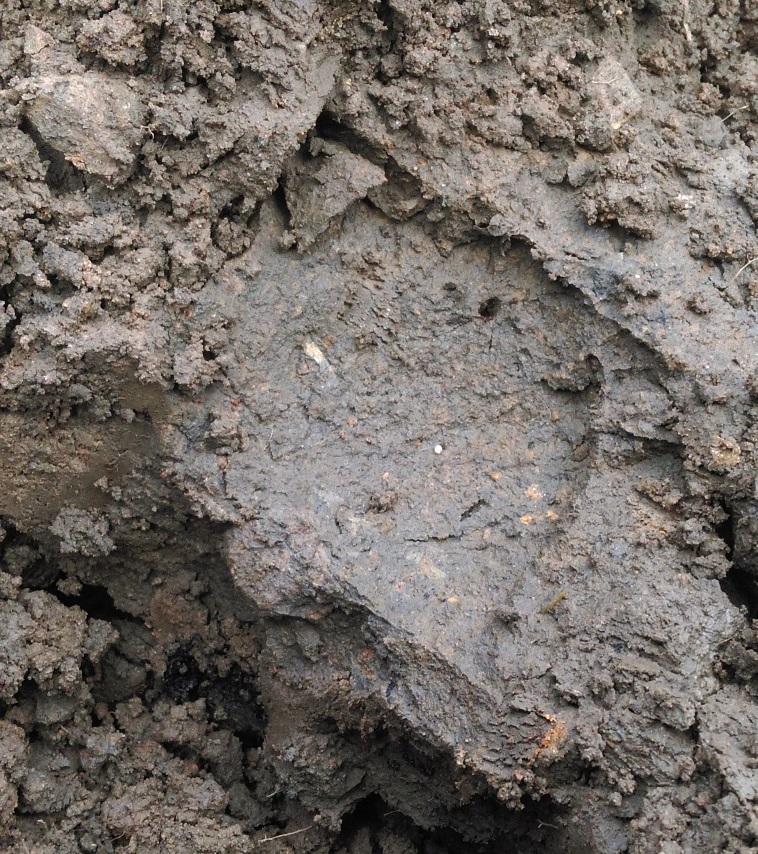

If you want to join us in any capacity please contact us. We will be onsite at the kiln for another week (at the whim of the weather) after which it will have to be back filled. There will be further digs this year at Craggs, mostly near the site of Great Craggs (a far less strenuous walk in) and there will be a week long excavation at the end of May and into June. No experience is necessary as we can give you training on site (non digging roles are available – and essential). Don’t be shy and keep an eye on the events calendar. Alex Whitlock 21 April 2016
Pitches Available for Barrowford’s Market Day
Work gathers pace on £32m. historic mill transformation
Work gathers pace on £32m. historic mill transformation
Click Here for the latest on the Brierfield Mills regerneation prject.
Digging for Britain – Ribchester
Digging for Britain – Ribchester
Last Night’s Digging for Britain programme on the BBC included an archaeological dig in Ribchester which uncovered evidence of the immediate post-Roman period. It also featured Pendle Heritage member Paul Hickman in excavating mode.
Reprieve for Lancashire’s under-threat council museums
Newhallhey vaccary fieldwalk – 12/3/2016 A walk with two puzzles.
Newhallhey vaccary fieldwalk – 12/3/2016 – A walk with two puzzles
Download the report here…
Gardening Group Meet Up 16th March
Gardening Group Meet Up 16th March
Due to many people being committed elsewhere, it was a quiet session in the walled garden scraping the moss from the beds and doing odd jobs. It was quite cold but you can see the plants slowly coming to life. The box edging around the beds, suffering from box blight, seems to be responding to the treatment given to it last year.
The next meeting will be Wednesday 20th April.
Accrington in the Sunshine
Tour d’Afrique
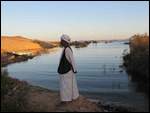 How often do you hear a comment from the audience like ‘I don’t want this talk to finish!’ Well, that’s exactly what happened when Sue Shuttleworth stood up to talk about her year in the saddle. Entitled ‘Tour d’Afrique’, Sue’s talk was delivered in a modest manner even though she’s cycled 27,000kms over the last 12 months across Africa and South America! Beautiful slides, human anecdotes, fascinating historical facts and political asides had the audience gripped from start to finish.
How often do you hear a comment from the audience like ‘I don’t want this talk to finish!’ Well, that’s exactly what happened when Sue Shuttleworth stood up to talk about her year in the saddle. Entitled ‘Tour d’Afrique’, Sue’s talk was delivered in a modest manner even though she’s cycled 27,000kms over the last 12 months across Africa and South America! Beautiful slides, human anecdotes, fascinating historical facts and political asides had the audience gripped from start to finish.
The tour started in Cairo, with cyclists from all over the world meeting for the first time and weighing each other up whilst pondering what lay ahead. Using the coastal route for safety and camping out each night, the group headed South through Egypt supported by two vehicles – one to prepare lunch and one dinner. With distances of 120kms per day commonplace and mountains roads (tarmacked and empty at this stage thanks to Chinese investment) the group took in many of the sights any visitor to Egypt would want to see – the pyramids, Luxor, Abu Simbel etc.
Sue then went on to discuss the Nile, the countries through which it travels and the implications of the Aswan dam on neighbouring states. We were then transported to Sudan to arrive in Khartoum the location of the famous seige in General Gordon lost his life. Unfortunately we had to finish there but there was overwhelming agreement that we should invite Sue for part 2 – not to mention 3, 4 etc!
Keep an eye on our events calendar for details of the next instalment!
